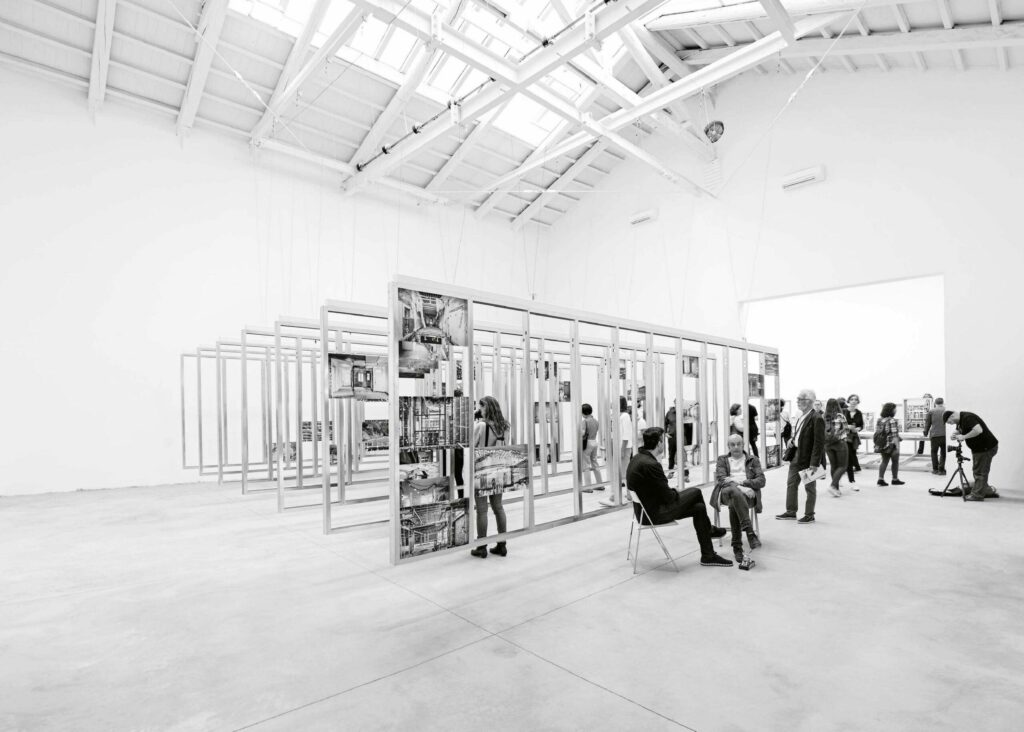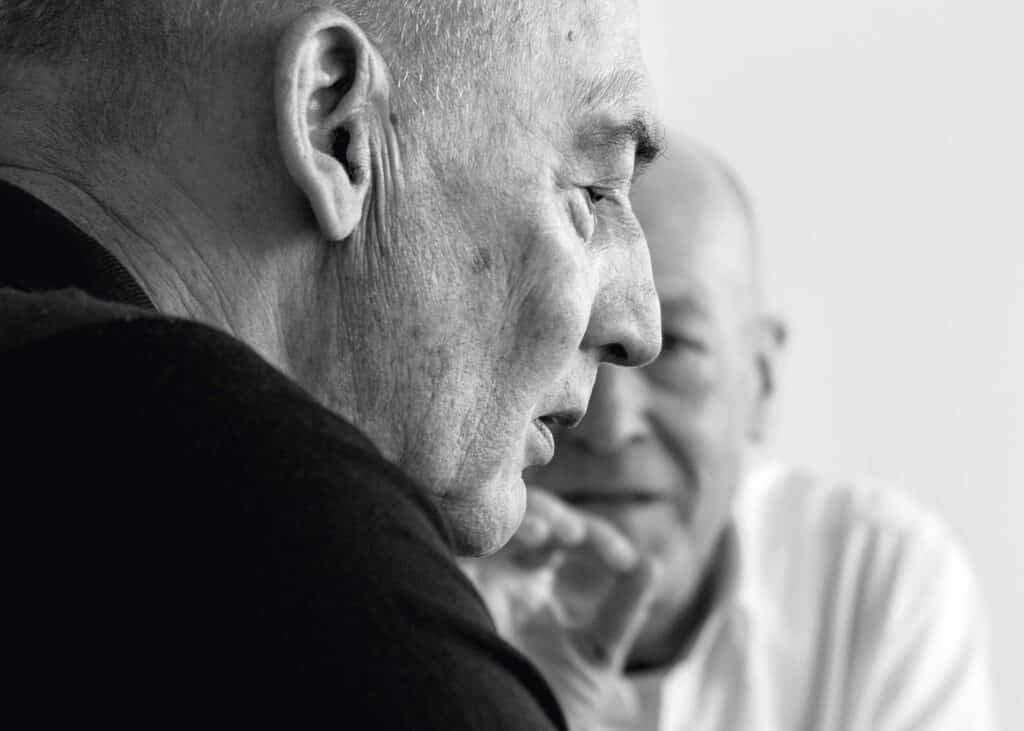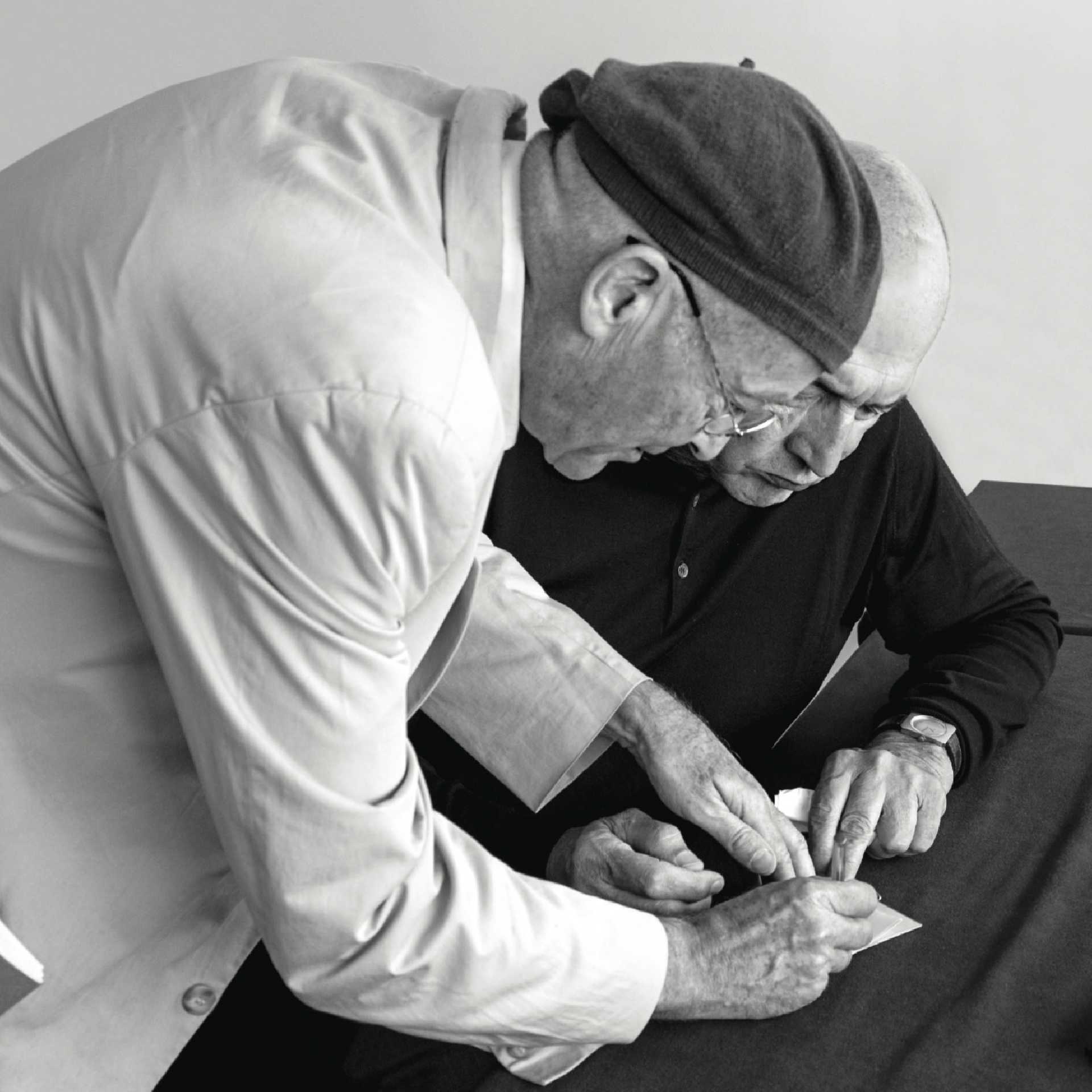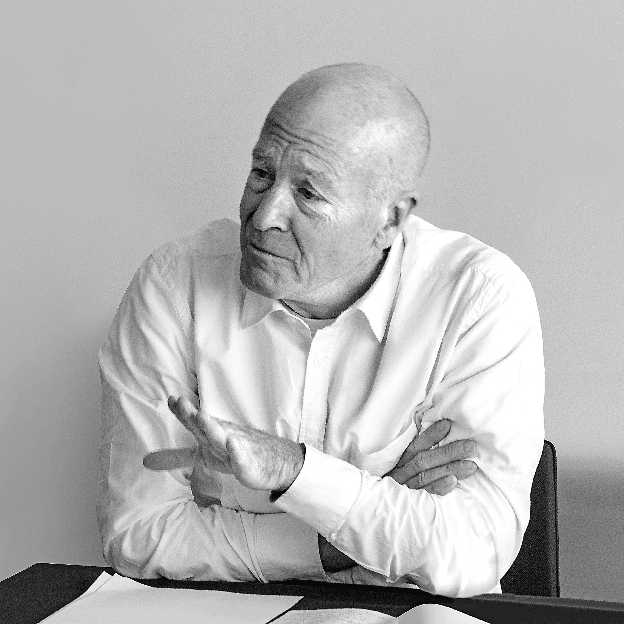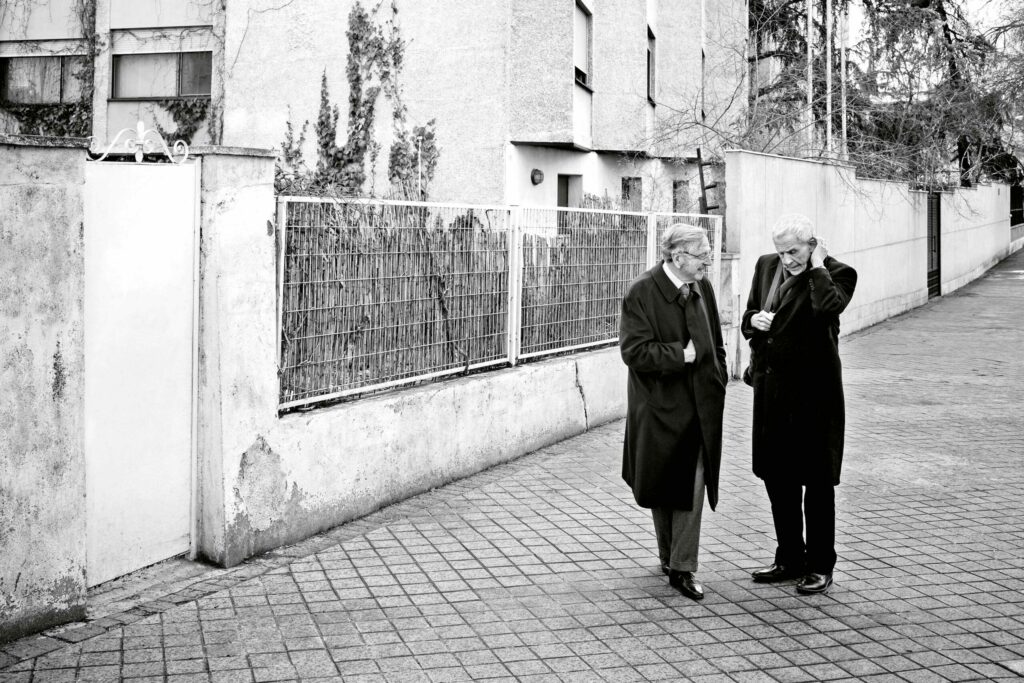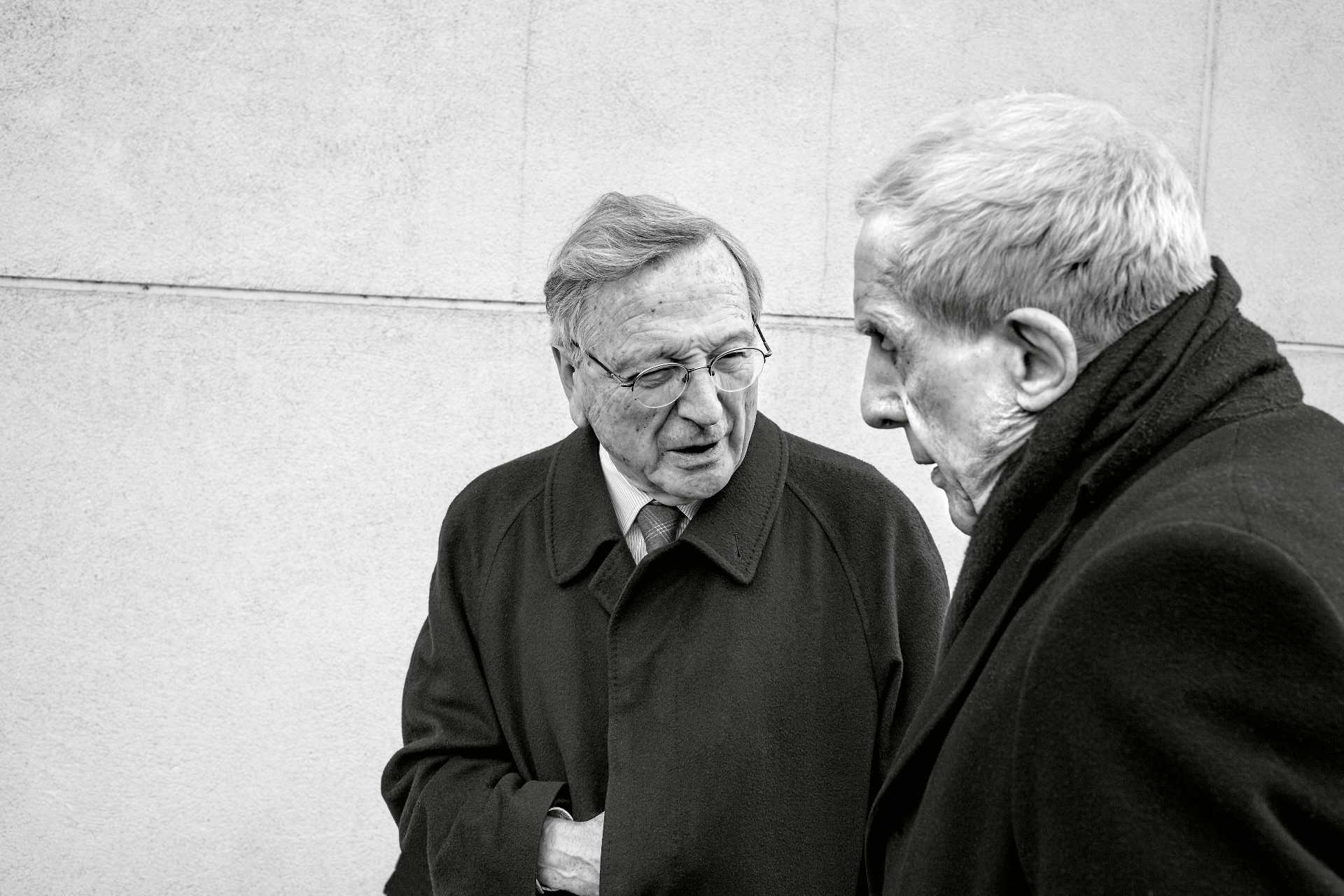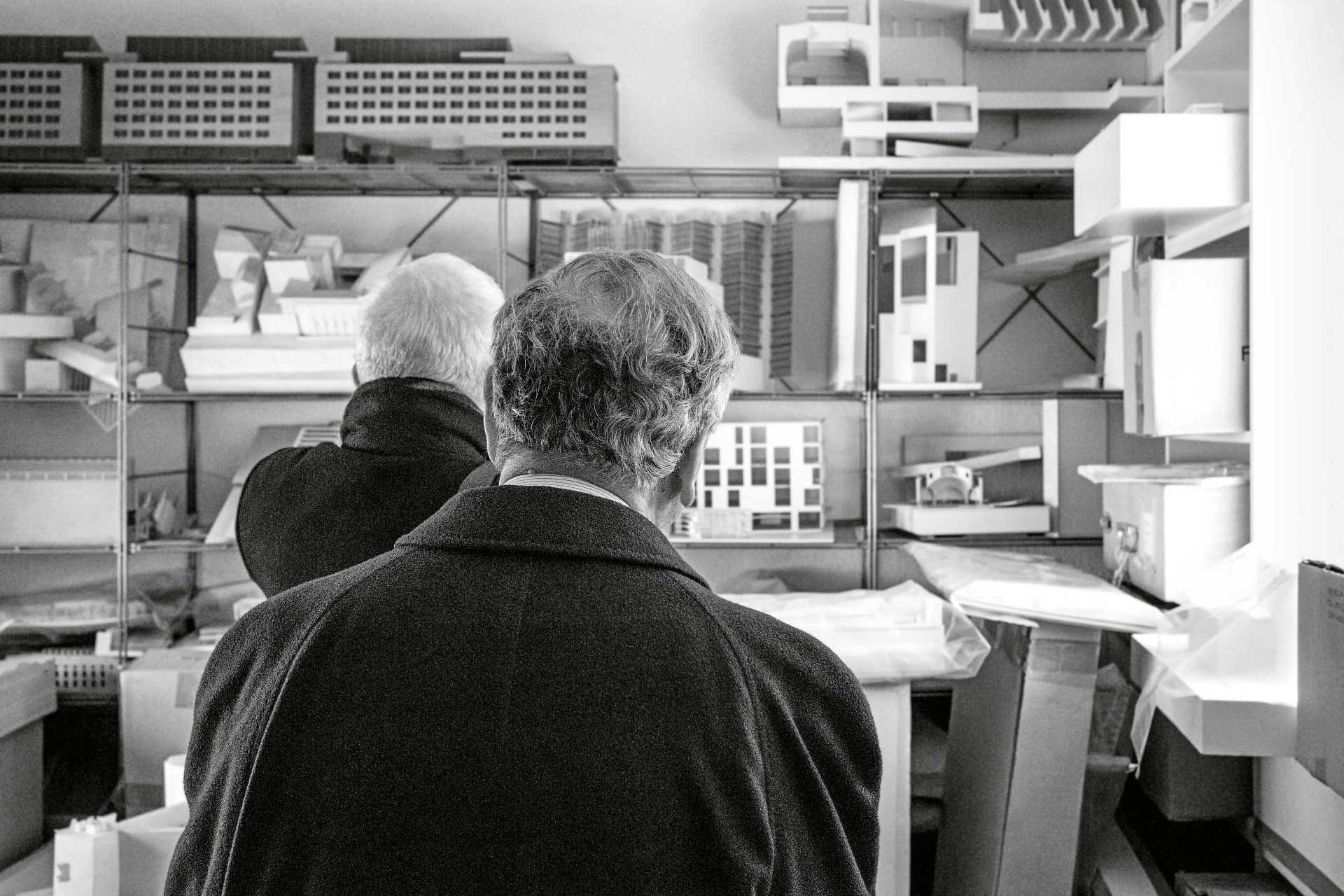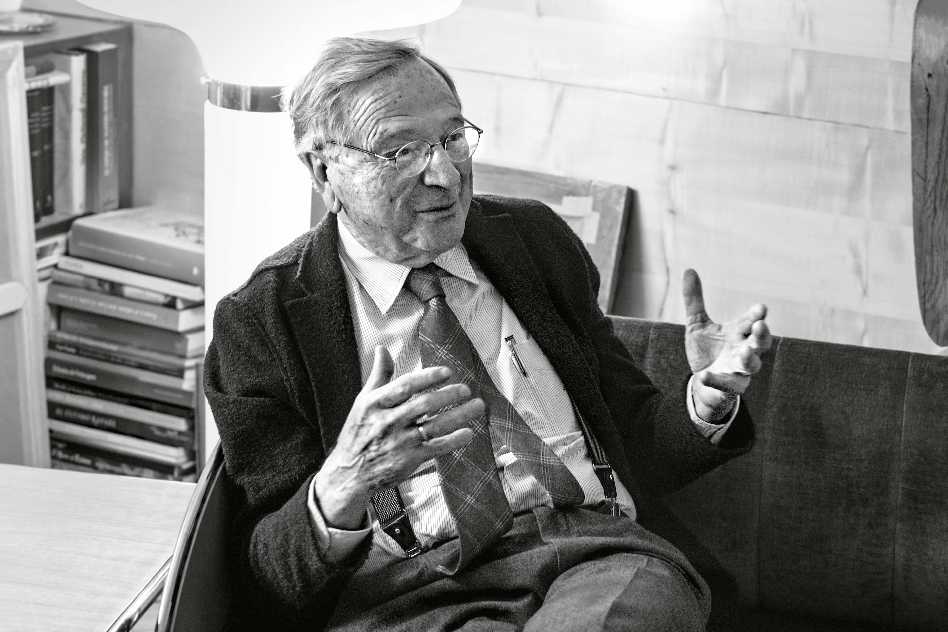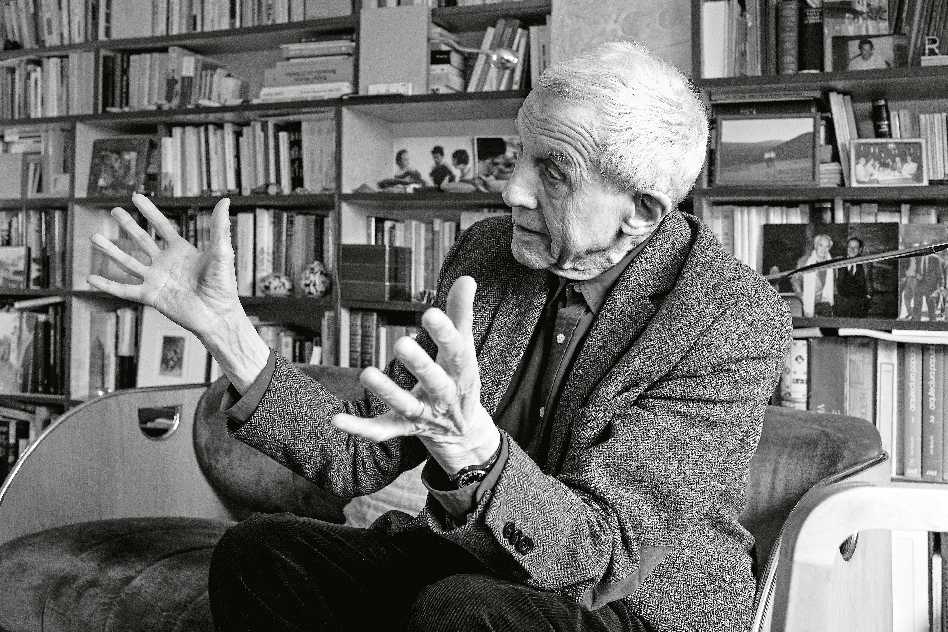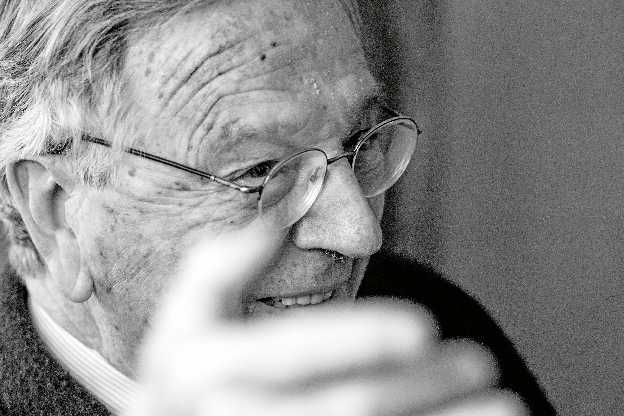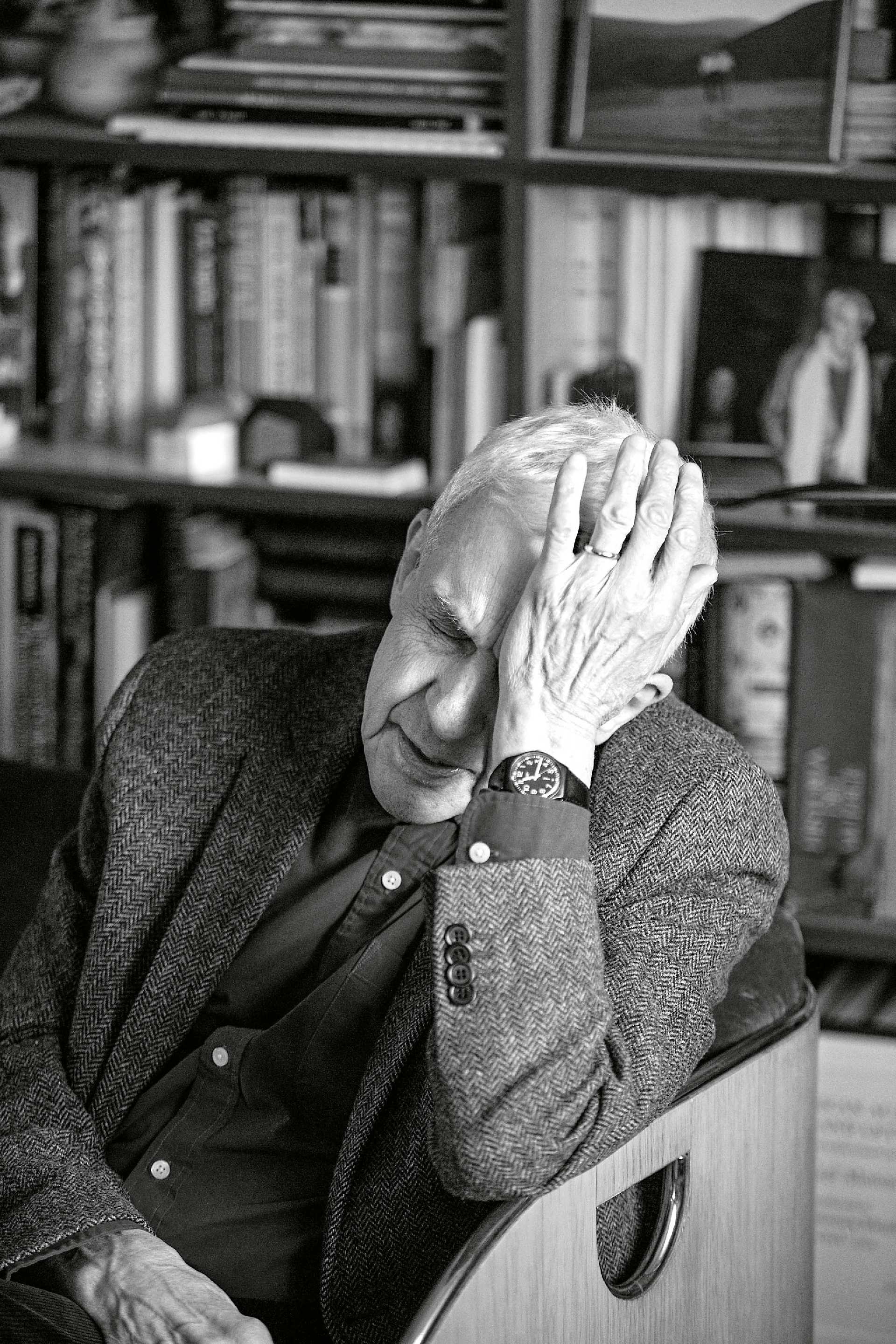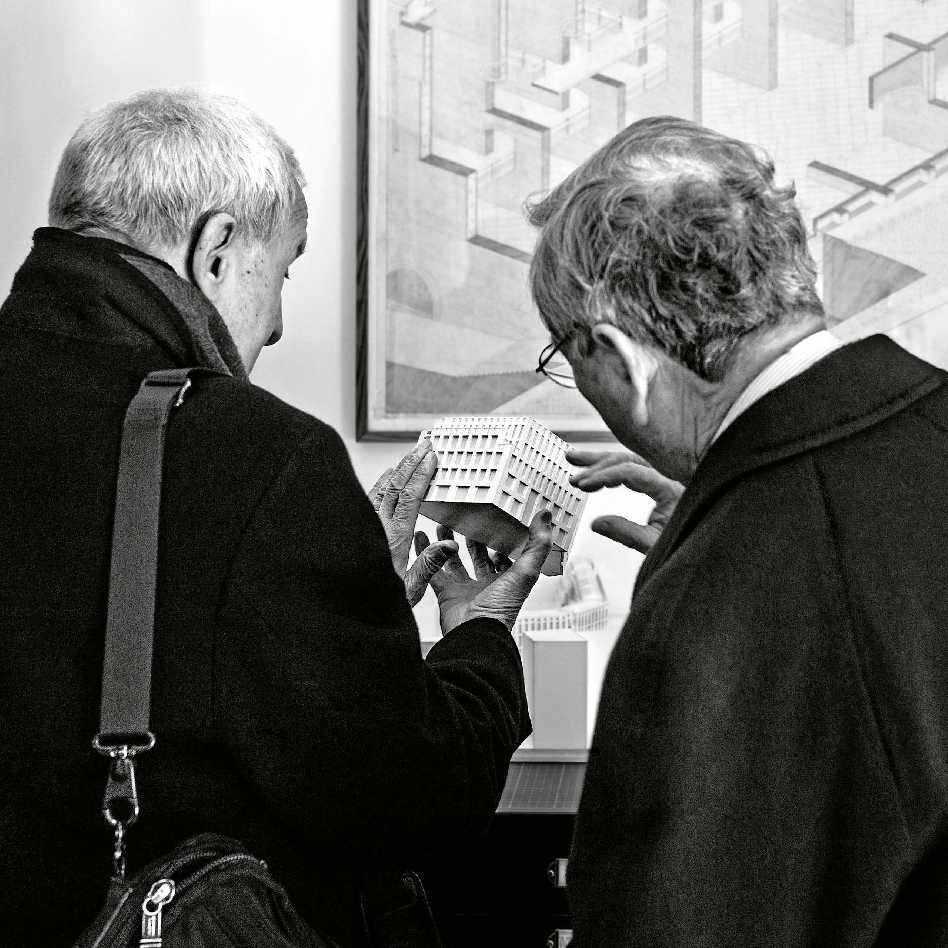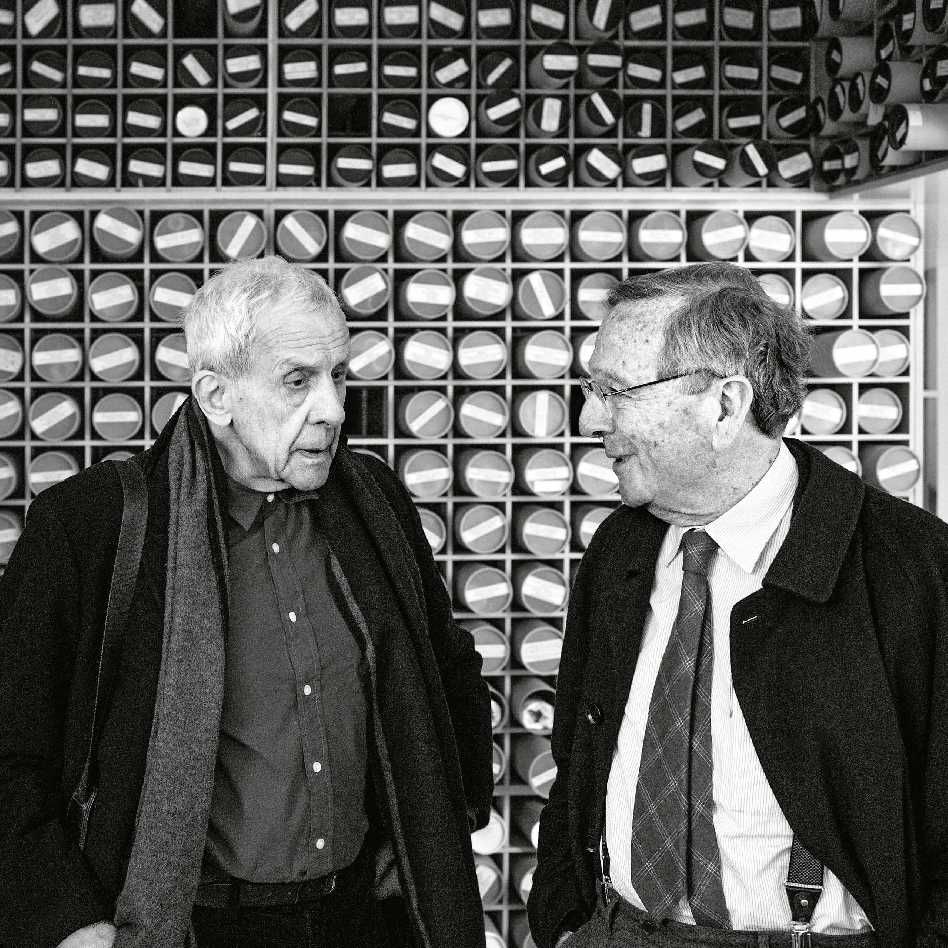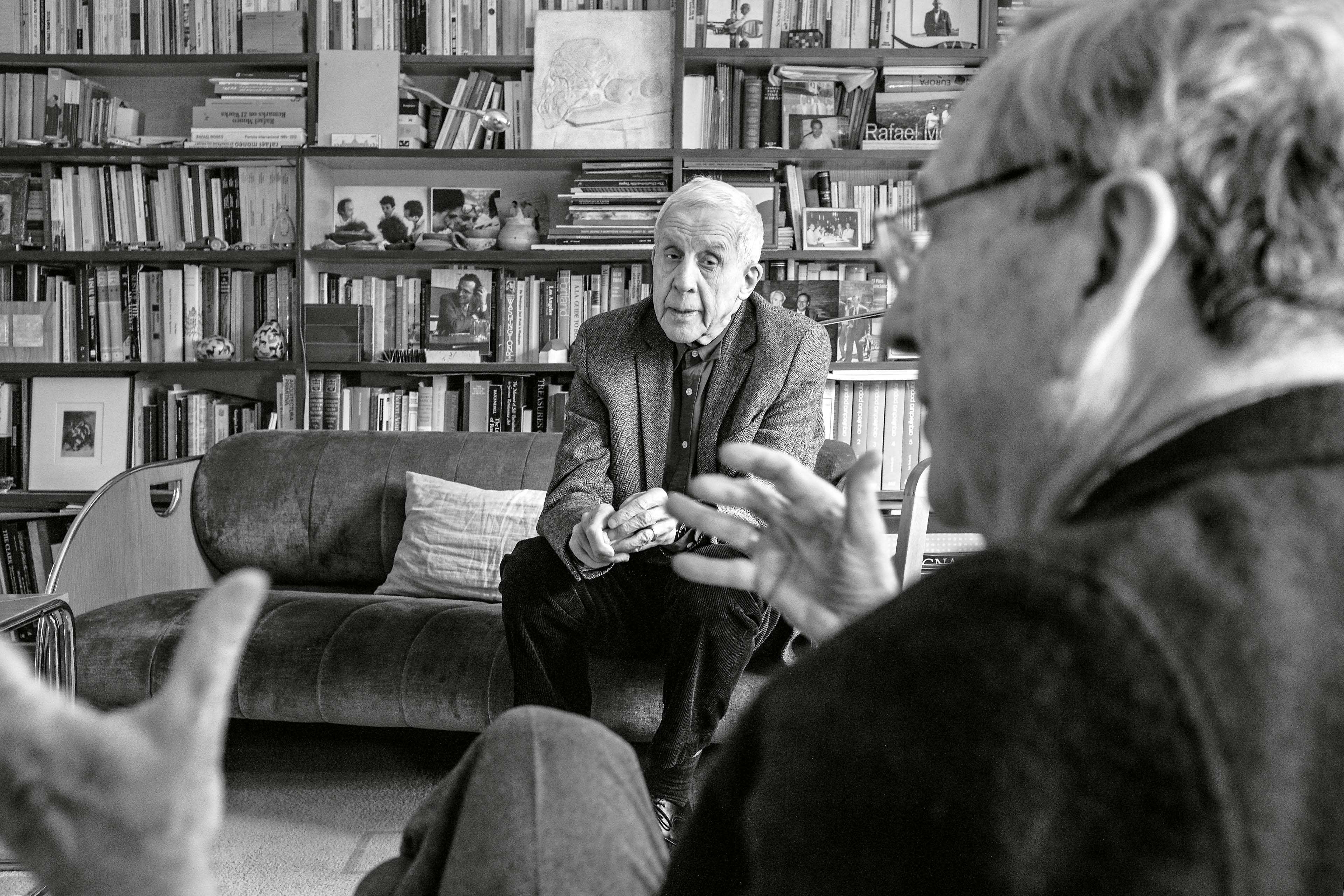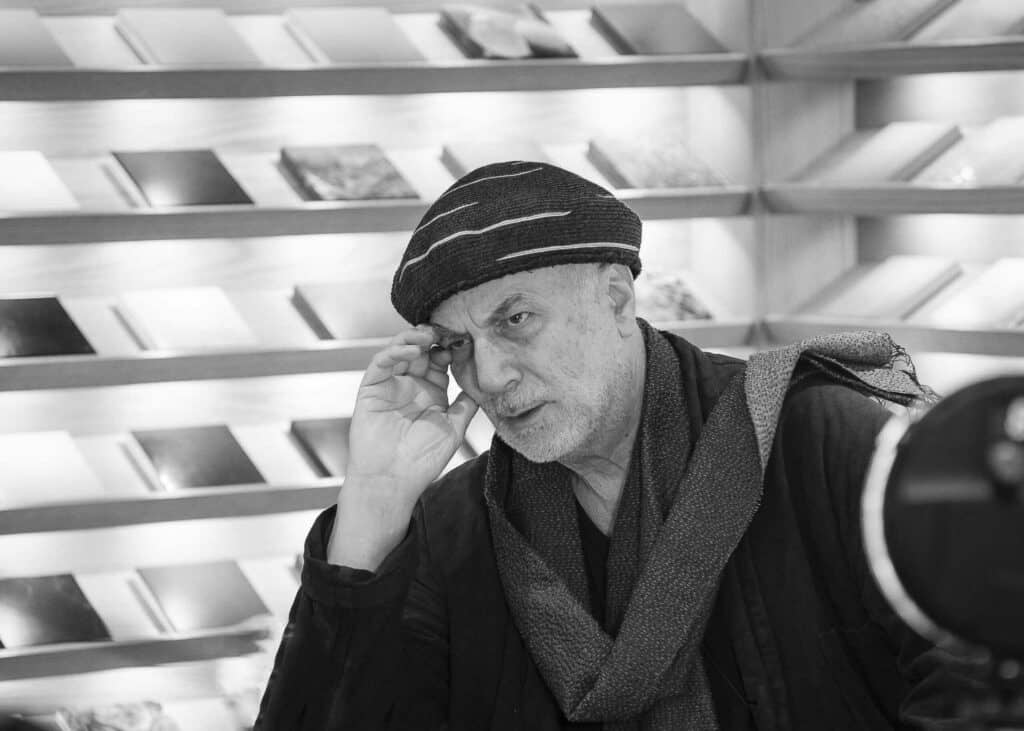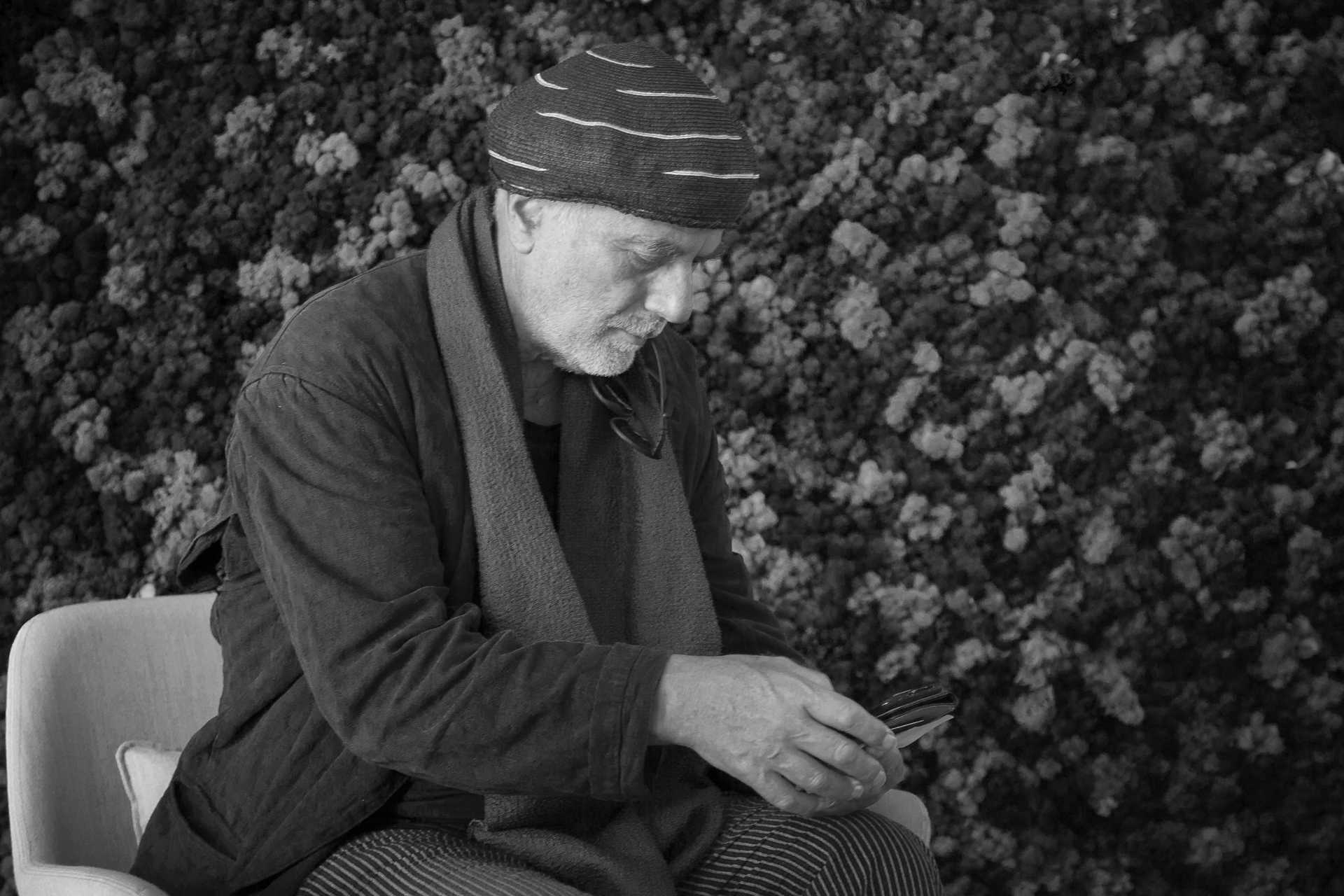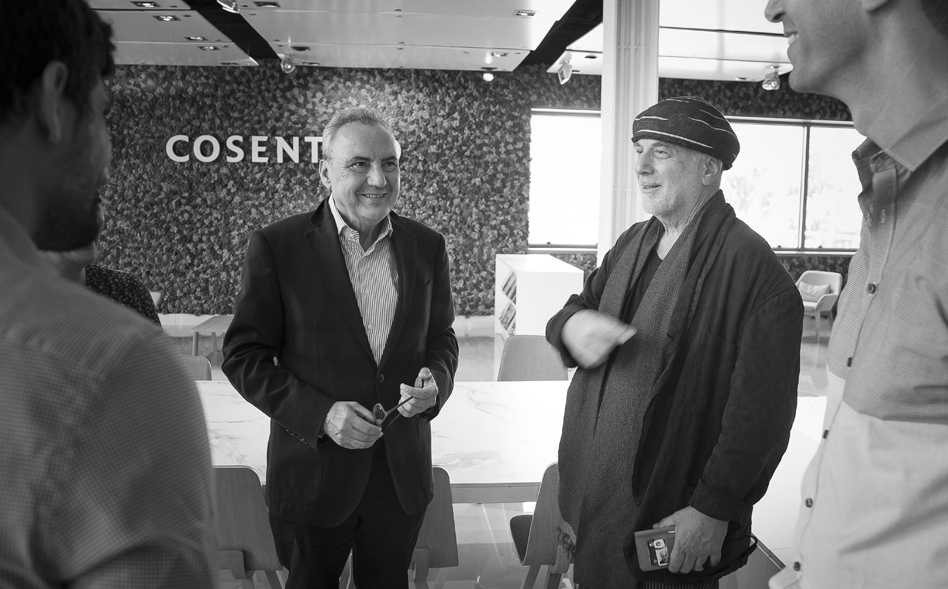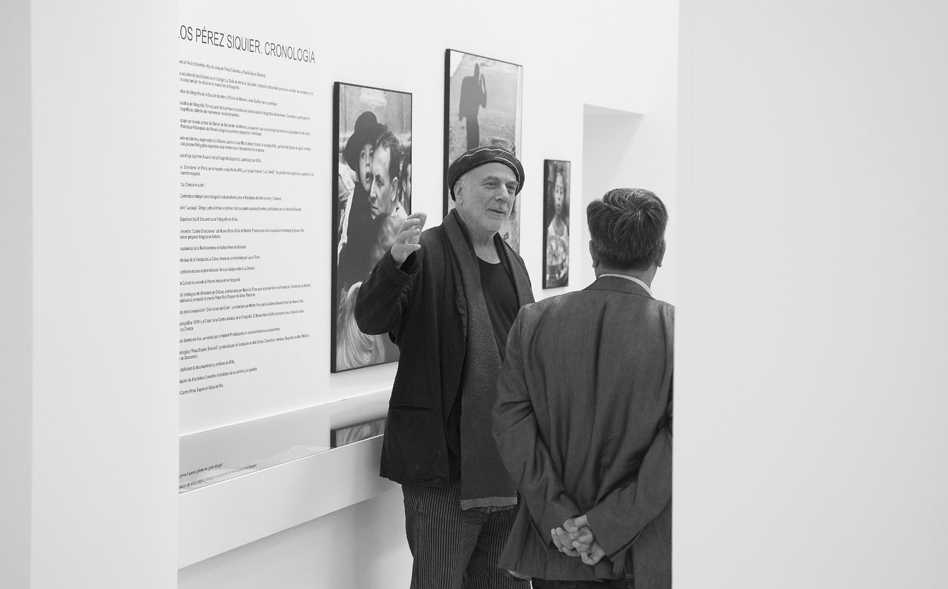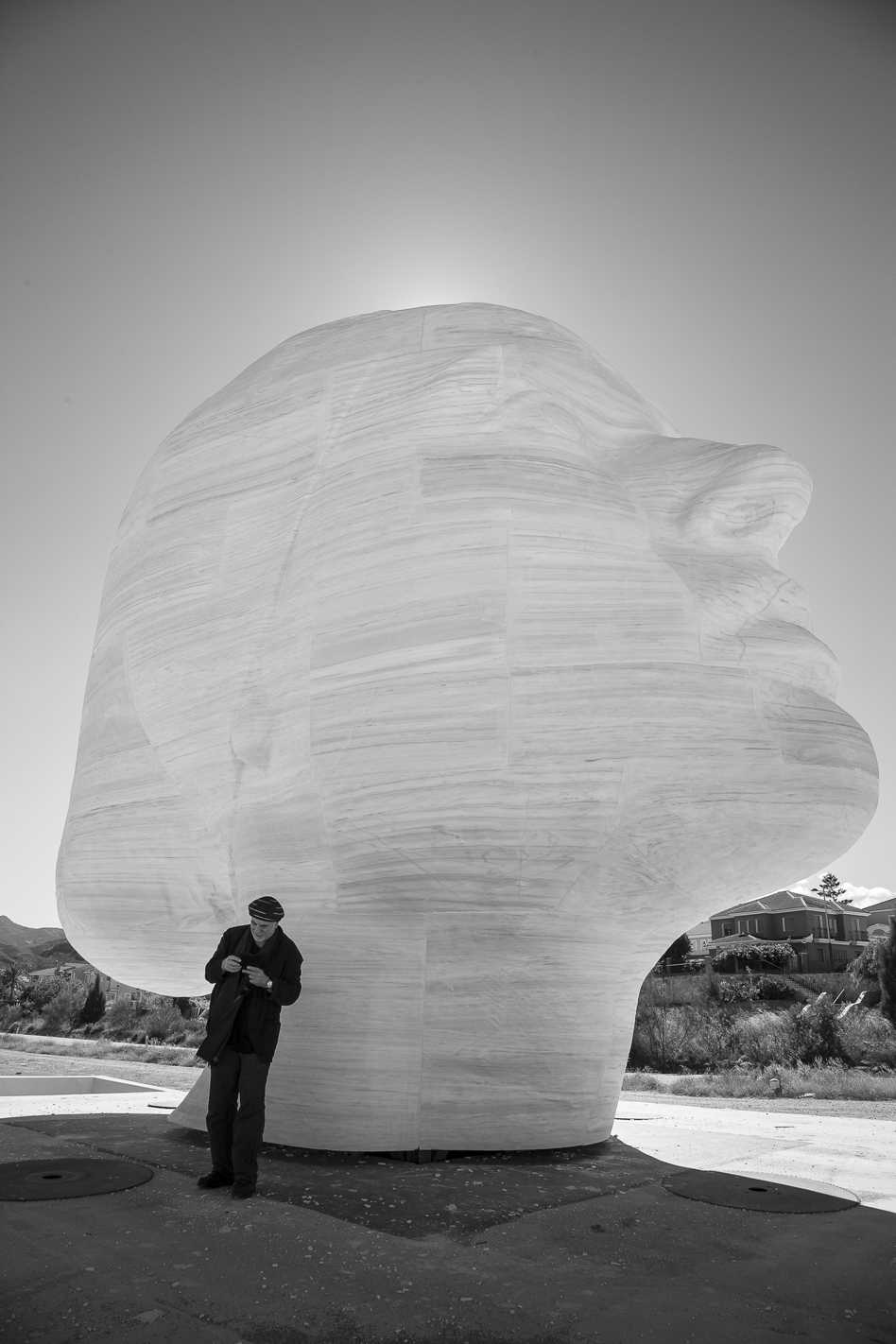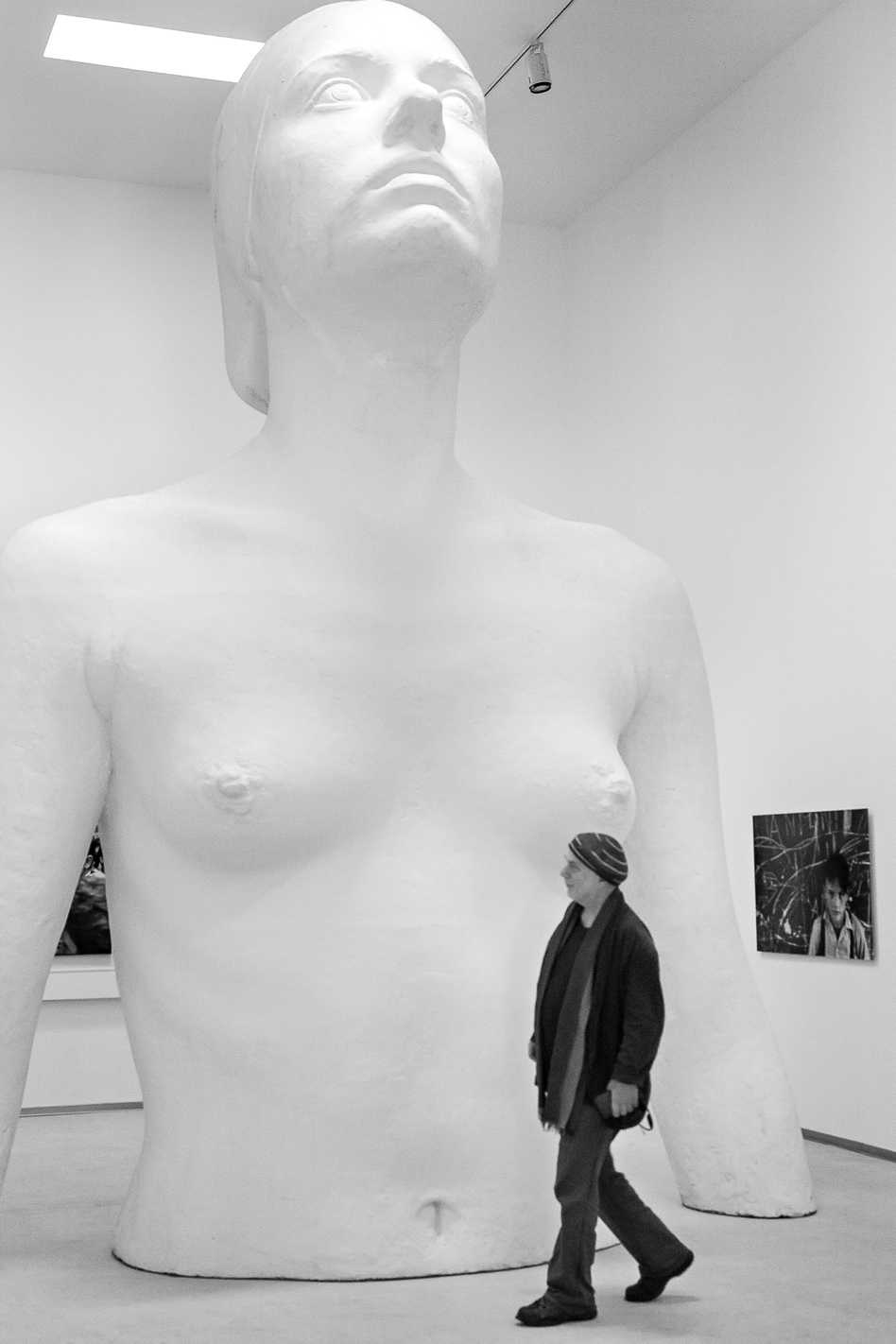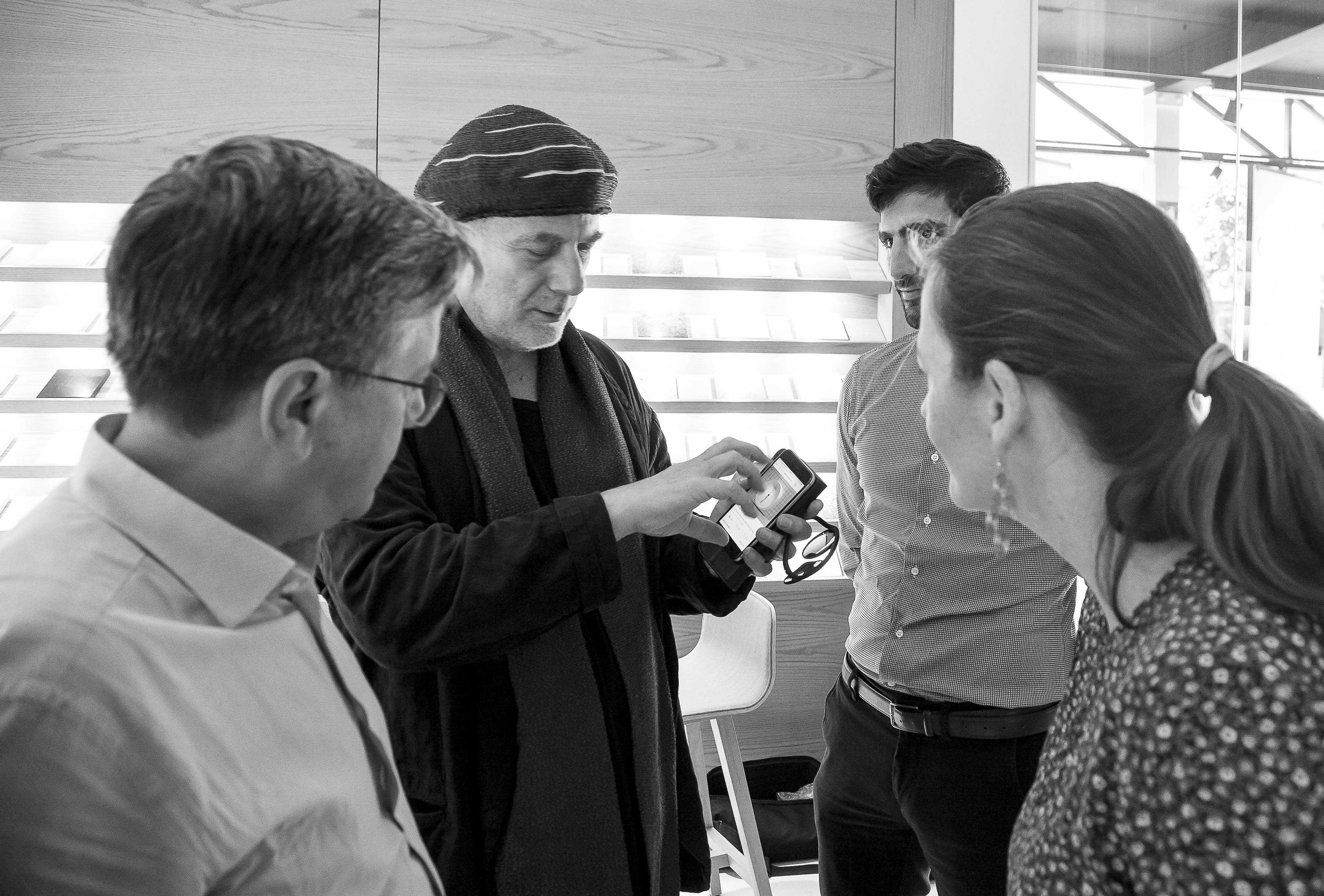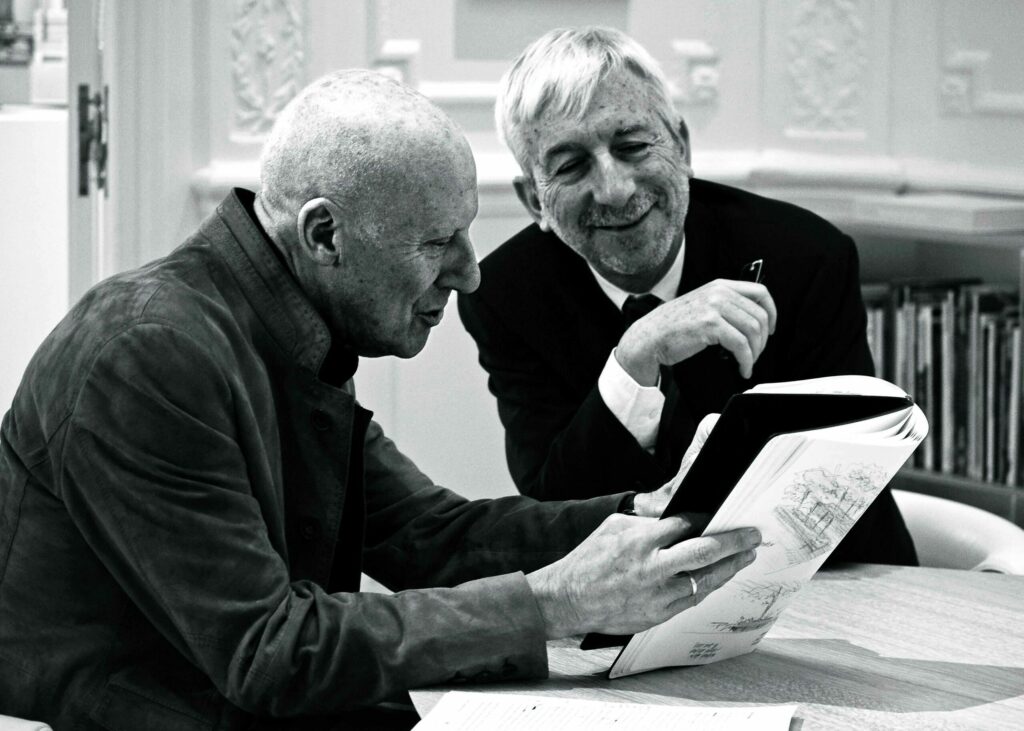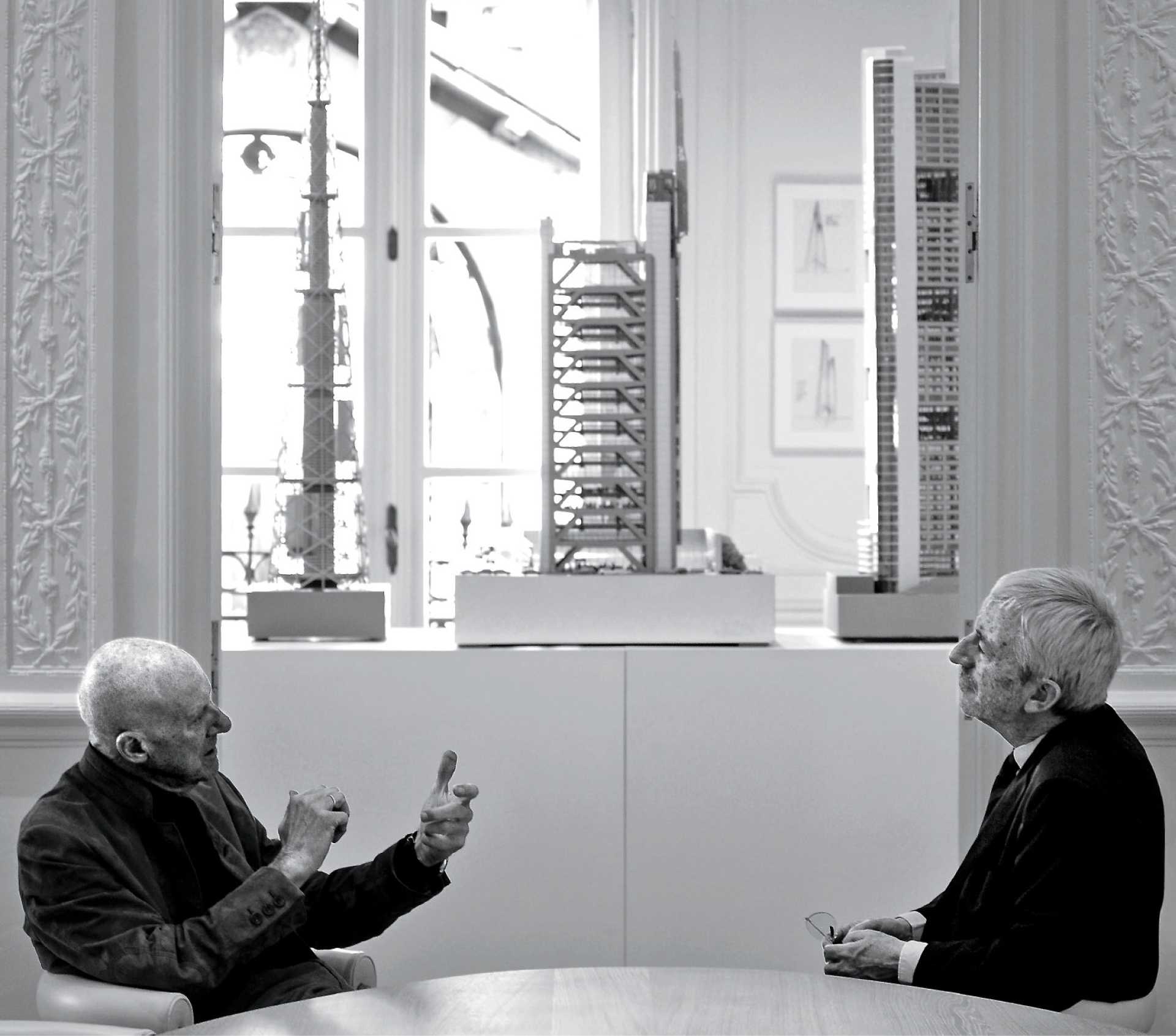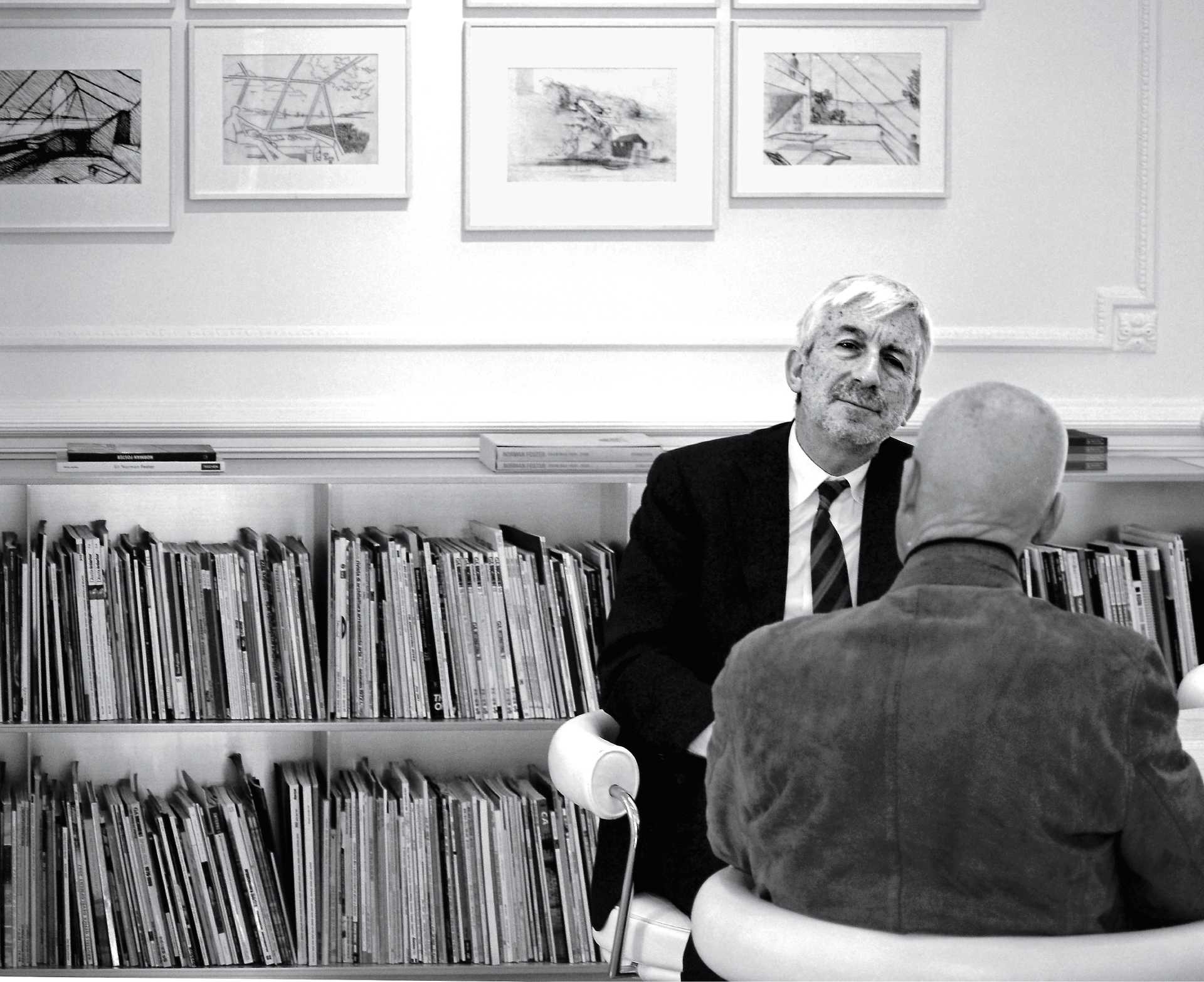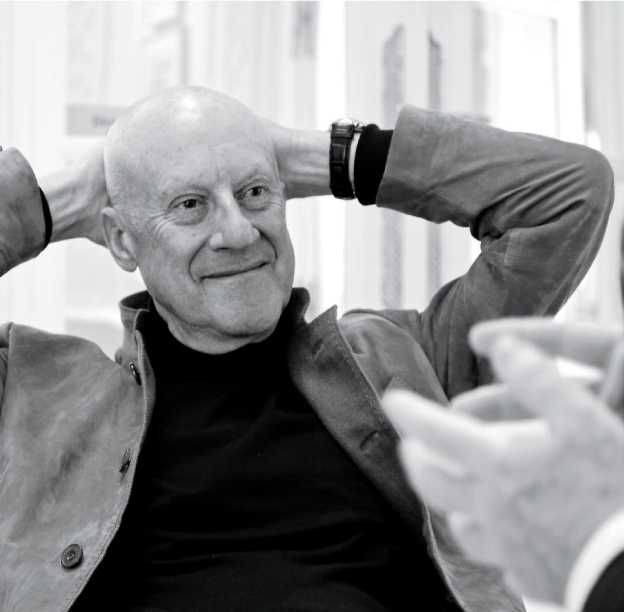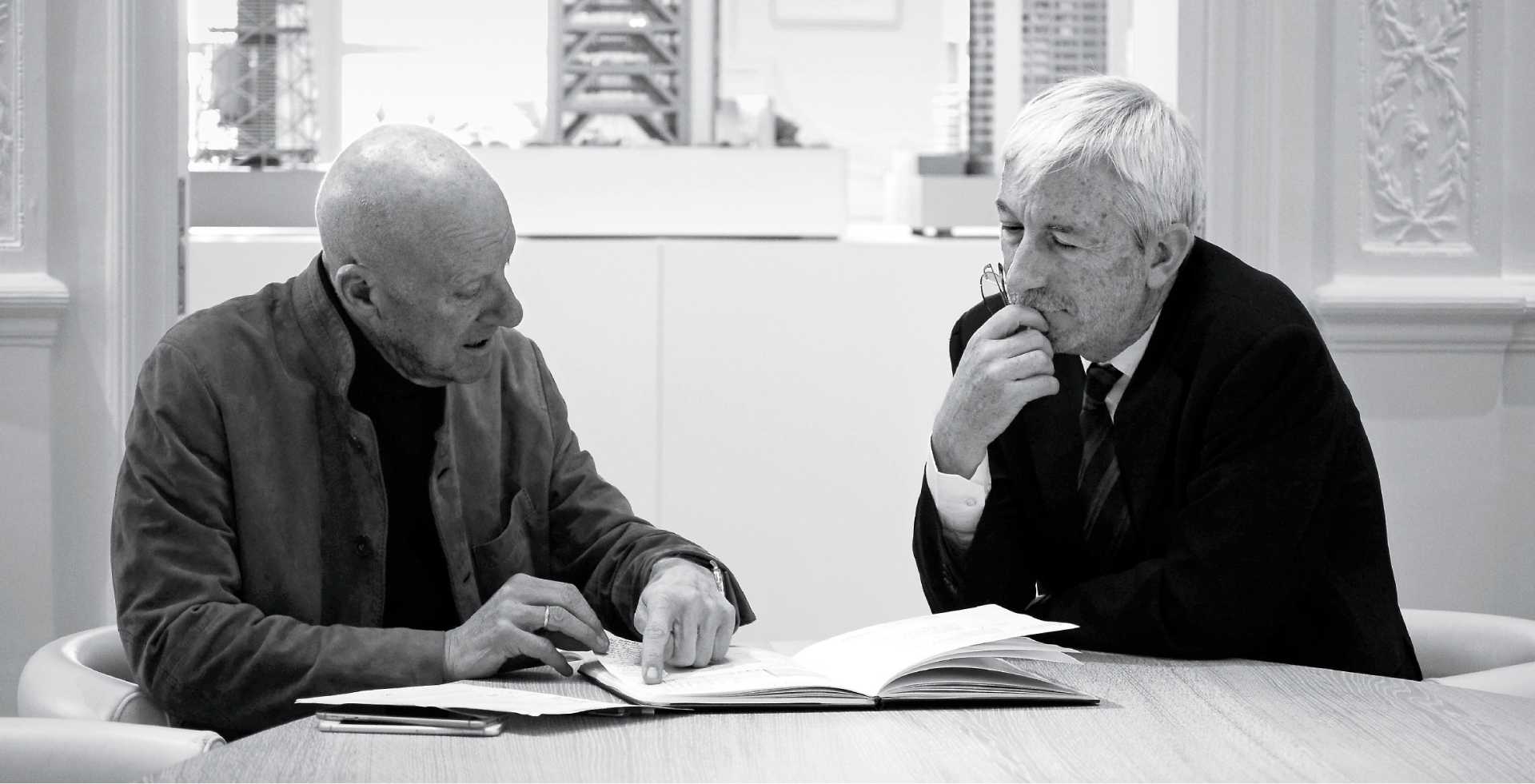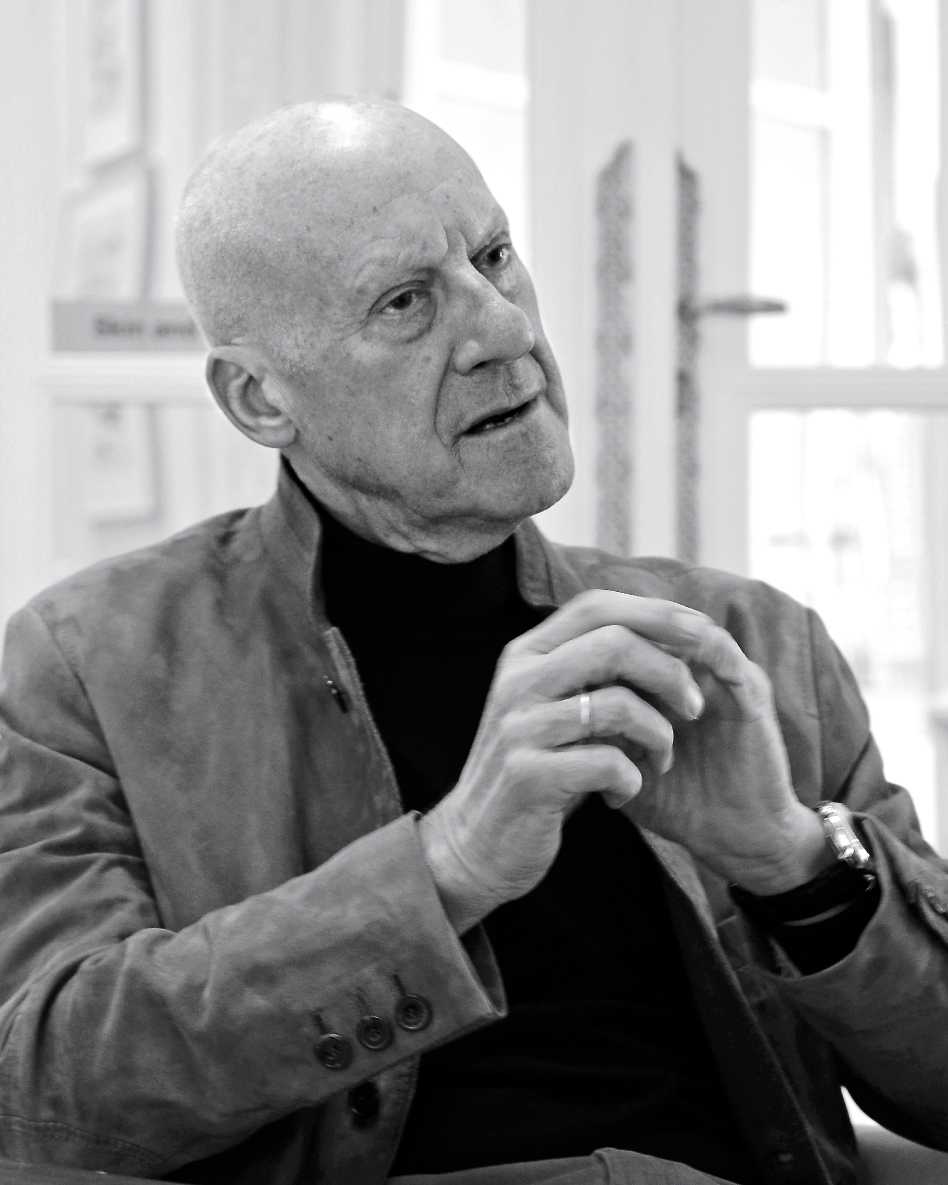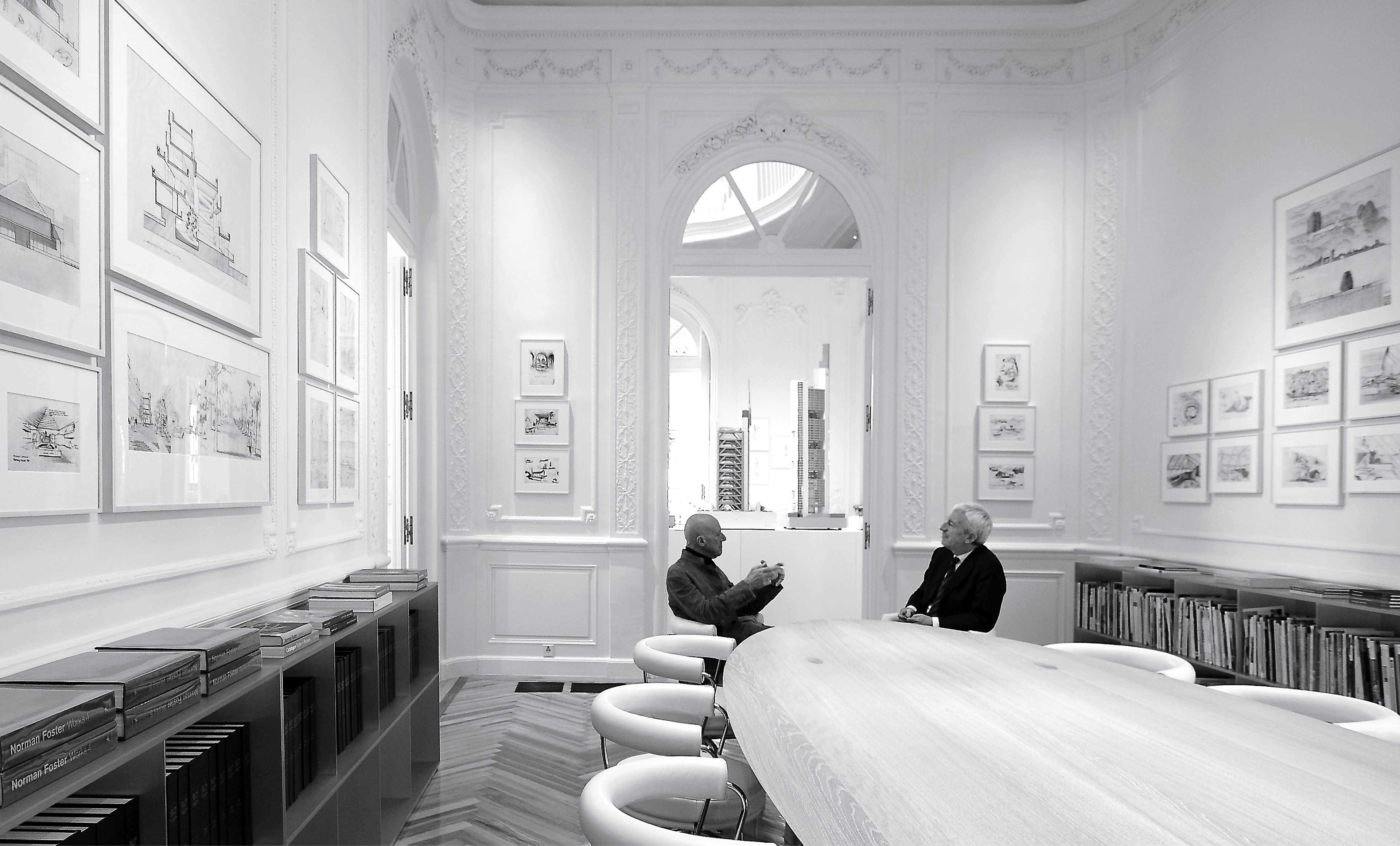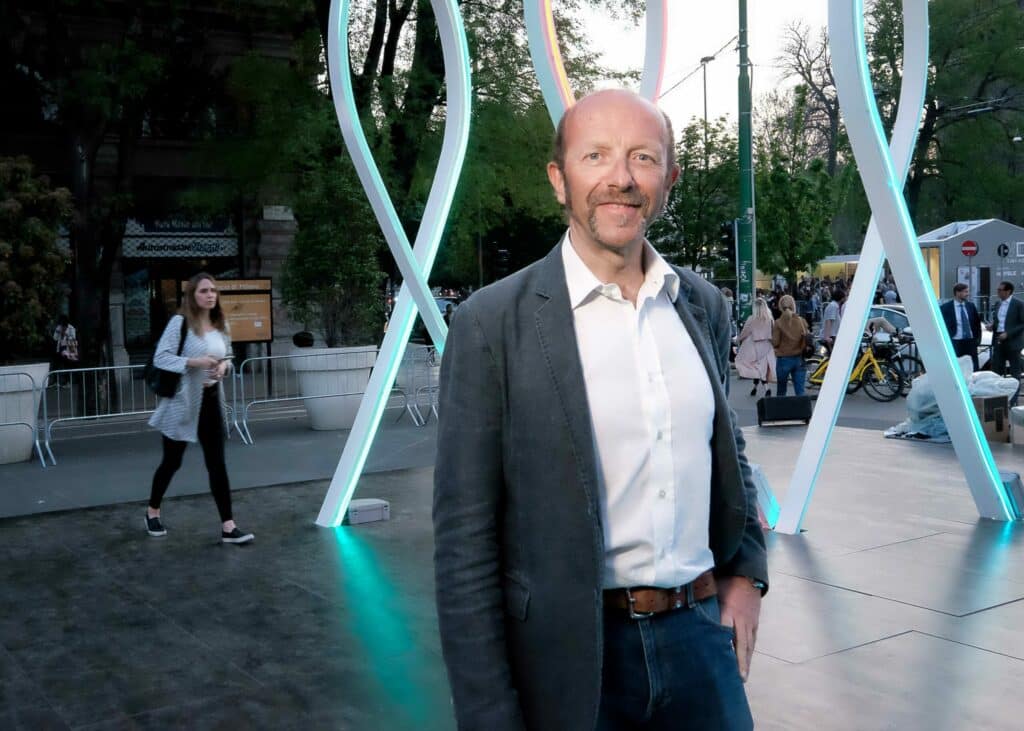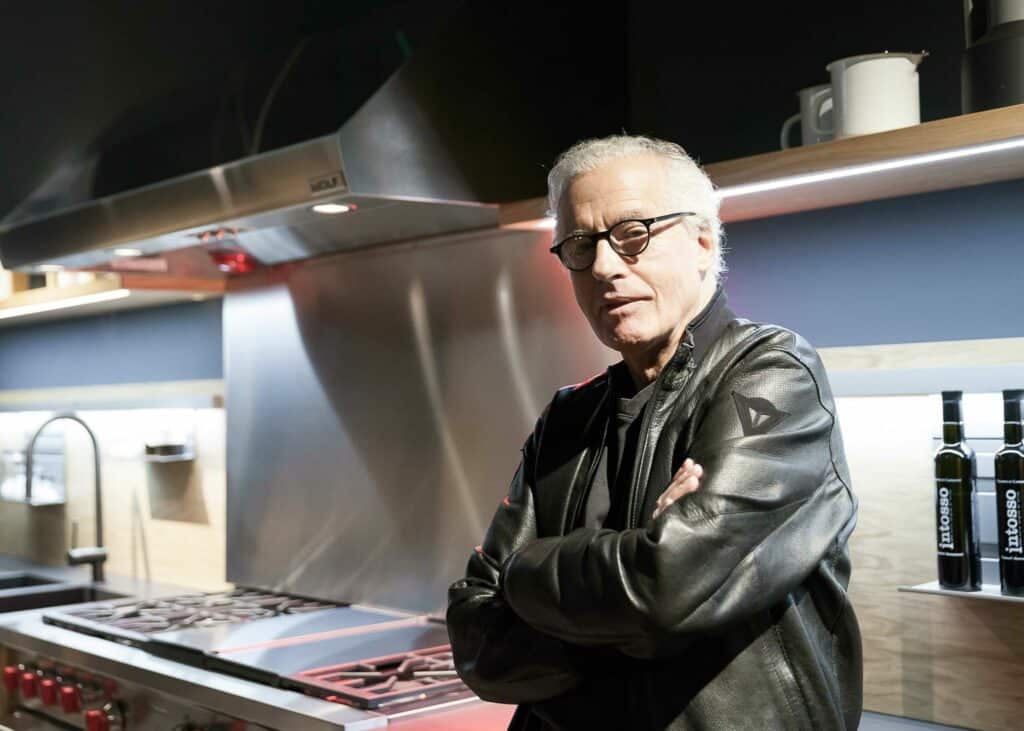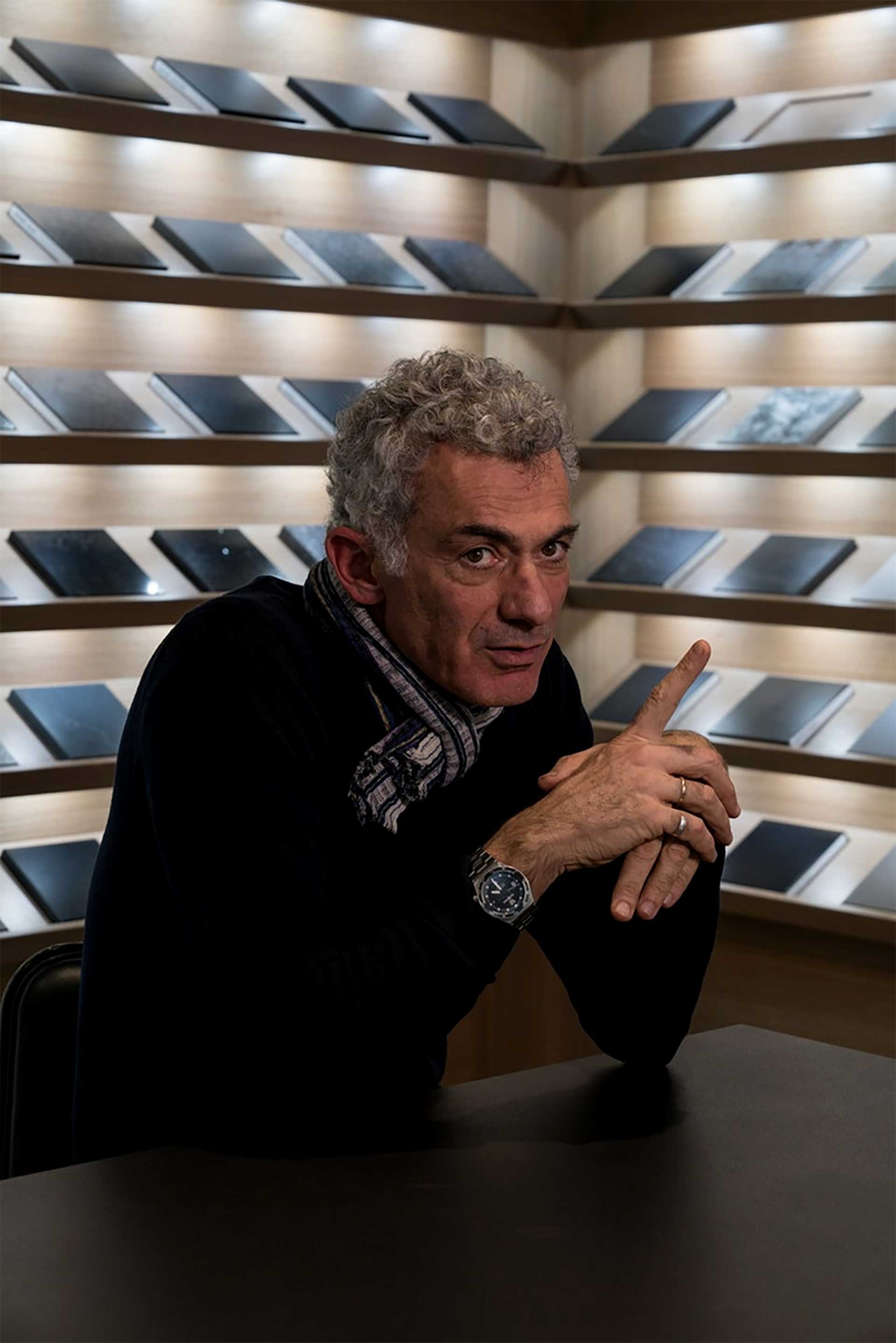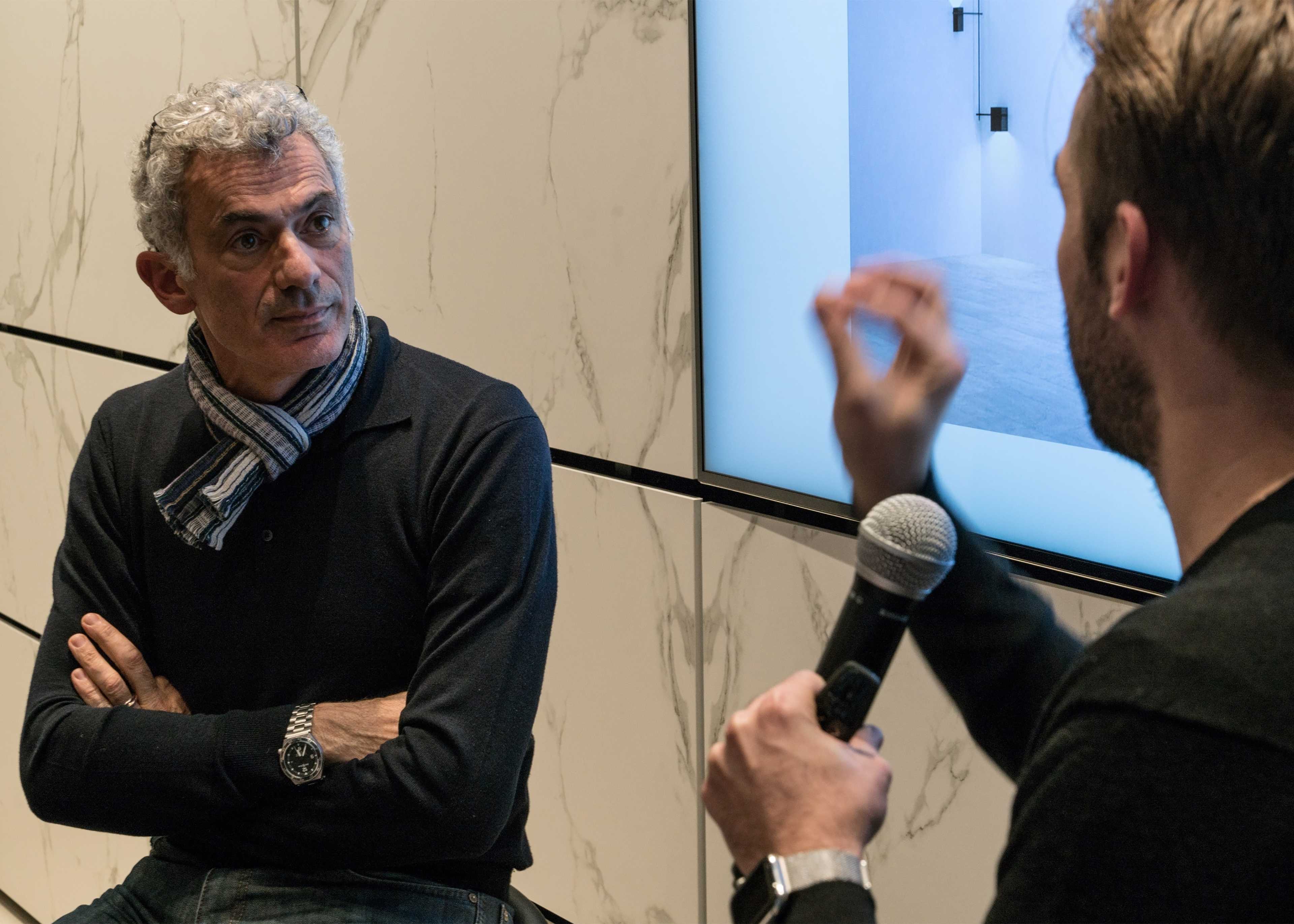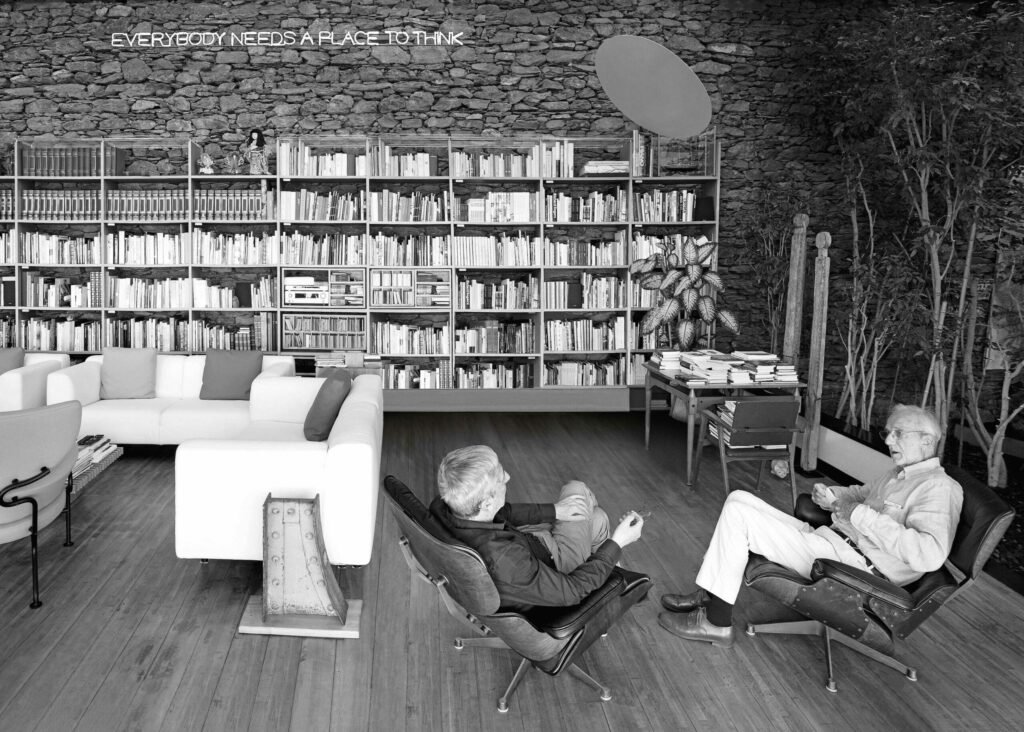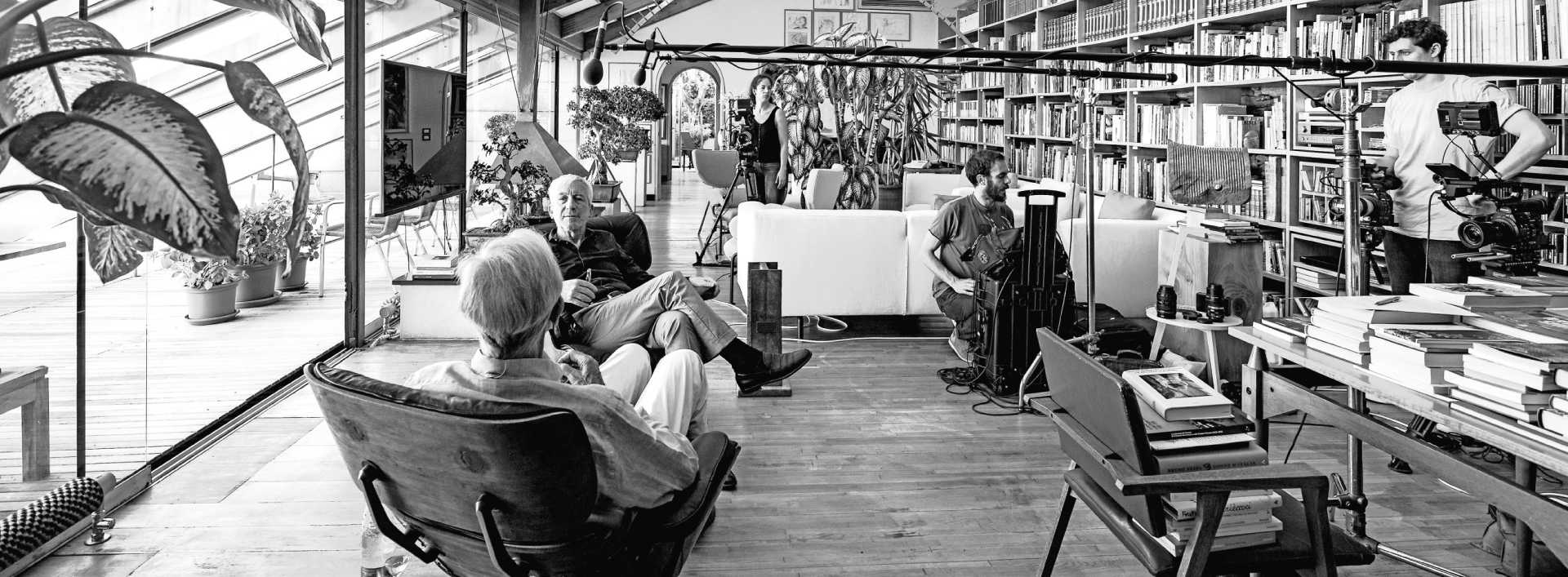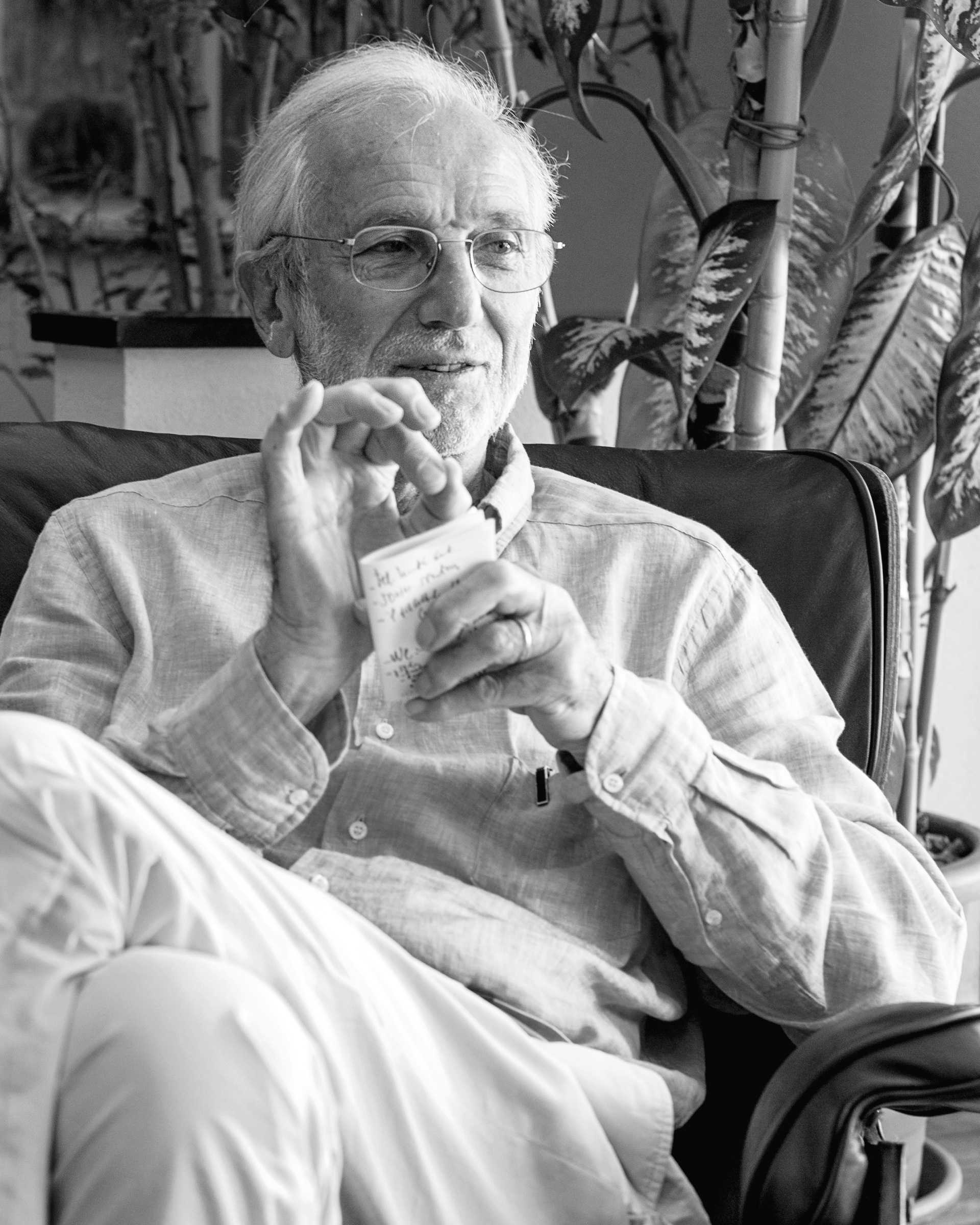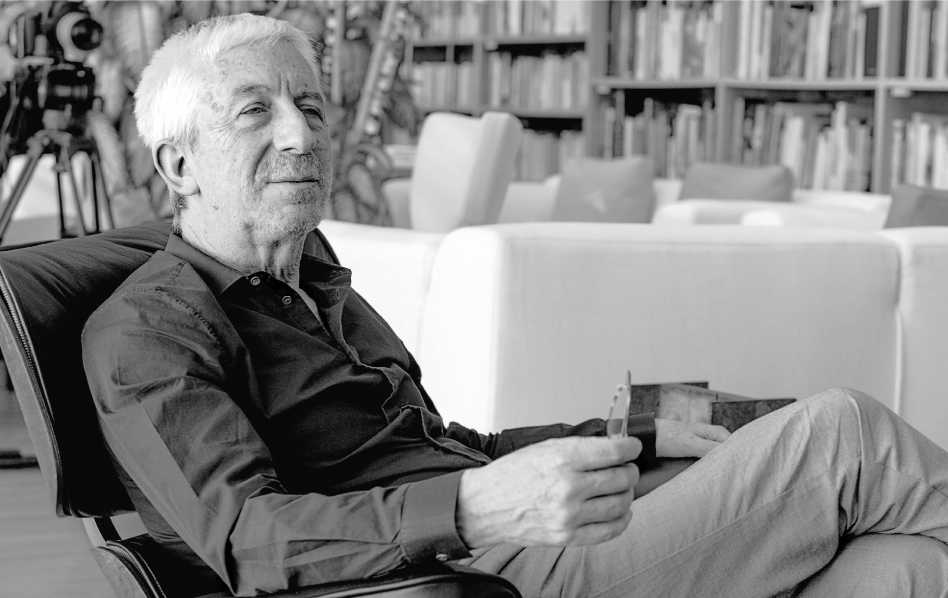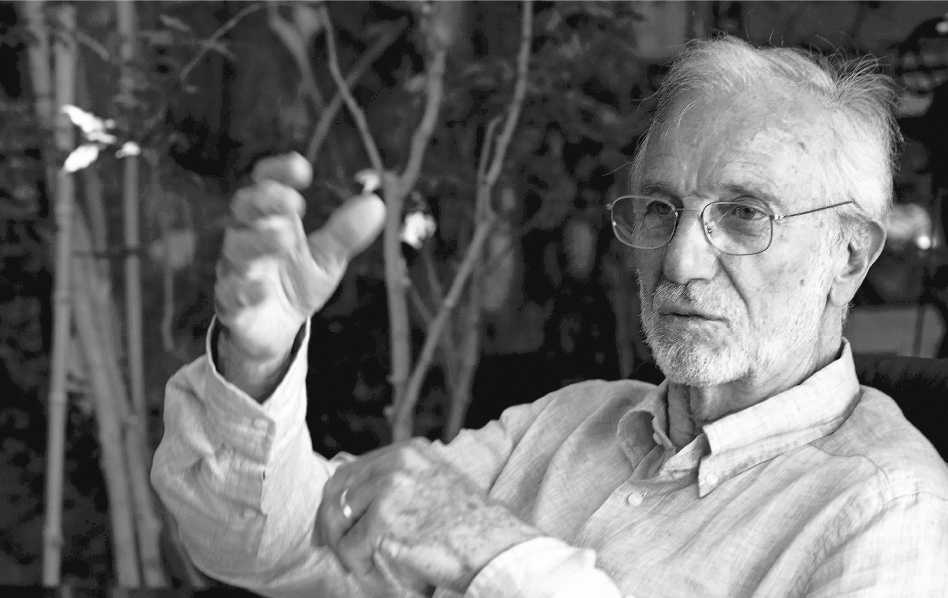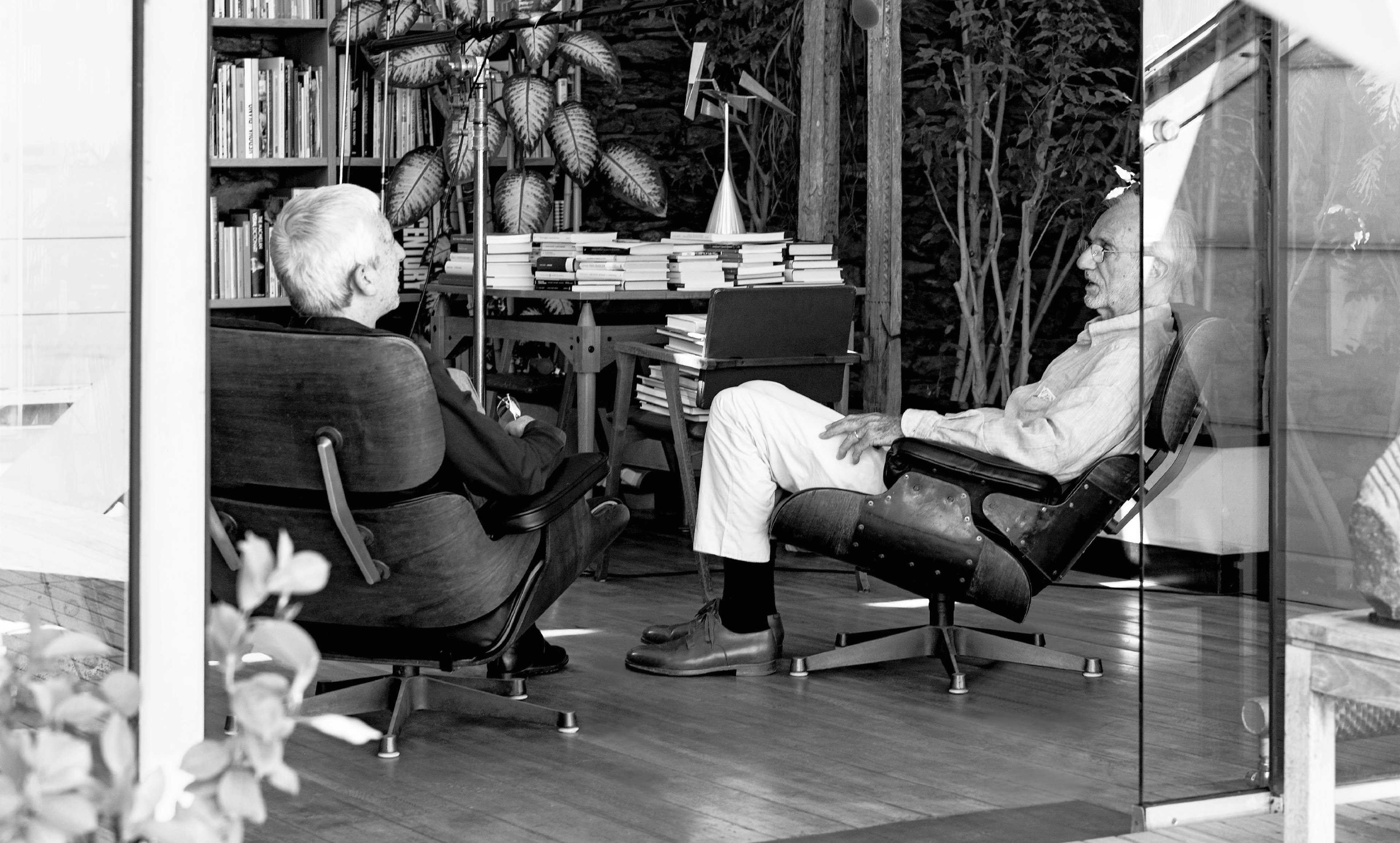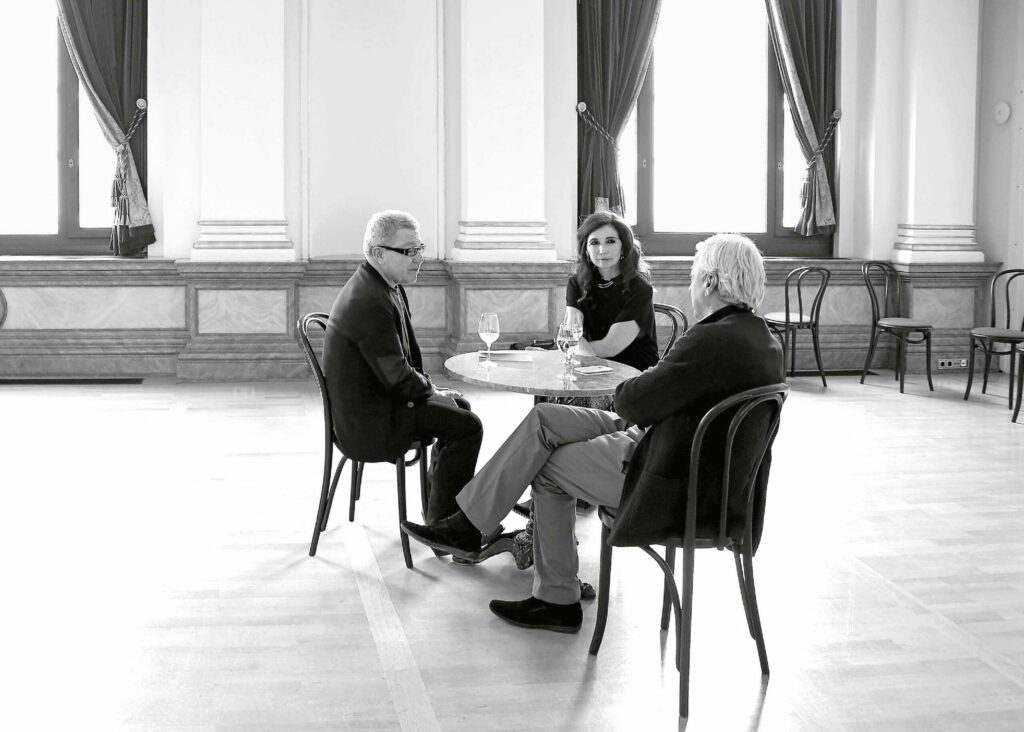
Libeskind & Nieto Sobejano
Taking advantage of the inauguration of Musical Labyrinth, an installation made of Dekton pieces that is a fruit of the collaboration between Daniel Libeskind and Cosentino, we bring the Polish-American architect and the Spanish partners Nieto and Sobejano together at the Alte Oper in Frankfurt. The conversation revolves around themes close to the hearts of all three. Music, for one. Enrique Sobejano and Fuensanta Nieto are lovers of this art – and recent winners of the competition for a center devoted to the Estonian composer Arvo Pärt – and Daniel Libeskind was a virtuoso performer in his youth. Another shared theme is memory, the two practices having coincided in the exhibition ‘Childhood Recollections: Memory in Design’ at the London Design Festival this year.

Enrique Sobejano: Architecture is closely linked to memory, and this not something that is frequently discussed. Memories are in the background of everything we do. When people explain architecture rationally, I think it’s a genuinely useful analysis, but there is always something missing in the explanation, something lying behind which is not always explainable._x005F_x000D_
Daniel Libeskind: We definitely share this view. Without memory, there wouldn’t be any connection made in any kind of work, whether in literature, music, or theater. In music, for example, it would be unimaginable._x005F_x000D_
Fuensanta Nieto: We learned a lot working for Arvo Pärt. You look at his musical notations, which are basically drawings, and you can really see architecture behind them._x005F_x000D_
DL: Absolutely. The connection between music and architecture is not metaphorical. It’s real. Architects also draw._x005F_x000D_
ES: In fact architects and musicians do the same thing: make drawings to be interpreted by others. Speaking of Arvo Pärt, one day he told us: “My music is like white light because white light can only be divided by a prism. And the prism is the spirit of the listener.” What a beautiful comparison!


DL: His music, moreover, is peaceful but also structural, which I think is what architecture shares with music. On the one hand it is tremendously creative, and on the other hand it is scientific, and has to be very precise. An approximation won’t do, it has to be exact, like architecture. It can’t be almost the right tone or height. It’s not negotiable._x005F_x000D_
FN: I know you studied music, and were good at it. Do you still play?_x005F_x000D_
DL: I do not. It’s very hard to be a hobbyist when you’re a professional. At fifteen I was performing with top classical musicians in the big venues of New York. If you read the reviews of that time in The New York Times, for instance, they are hardly mentioned, because I was a phenomenon! I was very short and I had a very large accordion, so large you could hardly see my head and feet. In those days the accordion was considered a folk instrument, not for Baroque pieces of music. It was often associated with gypsies or with poor people, or beggars. But it’s really a highly complex instrument, like a small orchestra. It’s a pity I stopped playing, but I am very grateful I did once play, because if it weren’t for the accordion, I would never have become an architect._x005F_x000D_
ES: That’s interesting. I also studied music: four years of theory, two years of piano. Then I stopped, and forgot everything. I could read notes, but not play them. Now, curiously, it has all come back. This is not to say that I can play again, but when you grow as an architect you start seeing connections and, as you were saying before, they’re not metaphors, but rhythms, spaces, tempos… Which brings me back to Arvo Pärt. He was quiet, very quiet, but his silences expressed so much._x005F_x000D_
FN: When we did his building – in the middle of this Estonian forest, a wonderful environment of huge pine trees – we wanted to be very careful with nature, which forced us to act with precision. I remember being there with Arvo and others from the team, drawing the building on the ground, and as we worked, everyone would look at him, searching for his approval. Then he came to us and said, well, maybe we are too near that house, I would prefer not to see it. We said, okay, don’t worry, we’ll start anew. We moved the building – maybe just five meters – and he came back, I remember well, saying: “Listen, now I understand that we are exactly the same. I never finish my music. I keep wanting to make it more exact. I think it’s the same with your architecture, you’re never finished._x005F_x000D_
ES: What a privilege! Nowadays there aren’t many opportunities to visit a building with the client and change things on the fly._x005F_x000D_
DL: Indeed a privilege. It’s fascinating how in that part of the world, there is such sensitivity toward nature and architecture. I lived in Helsinki for some time and things are very similar there. In a way, it’s very close to the Japanese sensibility – silent, not too many words said. But there’s a certain spirituality in things that we tend to take for granted._x005F_x000D_
ES: I agree. How different from the Mediterranean way of seeing things._x005F_x000D_
FN: There’s something else we have in common. In 1983, we were studying at Columbia and one day found ourselves at Cooper Union for a lecture by someone called Daniel Libeskind, with John Hejduk. This year we were invited to speak there and we were reminded of you. And, talking about memories, I remember the impression I had of the auditorium that first time, including how white it was. Returning there brought me the same feelings._x005F_x000D_



DL: True. People think memories come from the past, but they come from another place, one not necessarily part of the past._x005F_x000D_
ES: Last year we published a monograph titled Memory and Invention, and shortly afterwards I came across a line by John Banville in his book Ancient Light. It goes: “I do not know whether I am telling memories or inventions, if indeed there is any difference at all.” That’s exactly what happens. When you remember something, it’s not just what you experienced, but also what you have been told and what you have read about it… so at some point, memories become inventions._x005F_x000D_
DL: It’s complex, like the brain itself. And there is also memory that’s involuntary, or undesired, which just comes to you, against your will. I think that real experiences are not based on observation. In science, maybe. But I don’t believe anything new comes from observation. It’s there, but not yet molded. The future doesn’t come from the past either, or it wouldn’t be a future. The future has to come from somewhere we know nothing about. That’s why it’s the future._x005F_x000D_
ES: Which is why architecture has such a beautiful word: project. We imagine the future, we project to the future. One could say that this is what everybody does, but in architecture it’s especially clear._x005F_x000D_
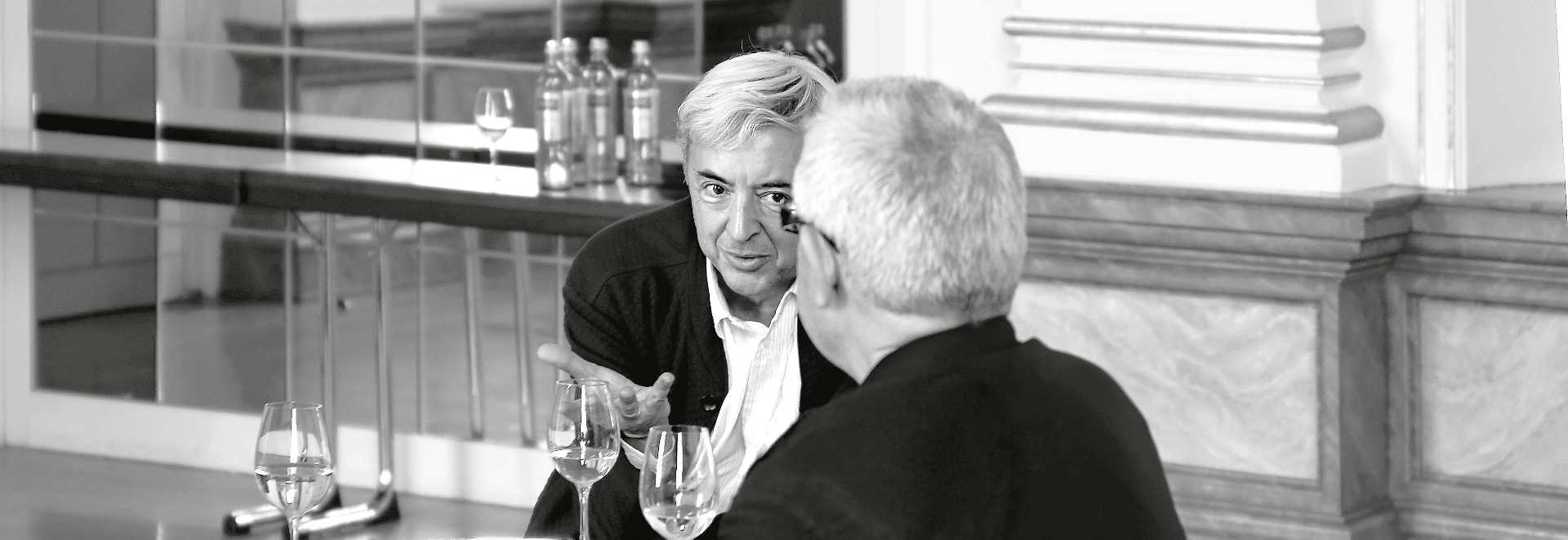
DL: It is, and for foundations we have to dig up earth. This is not often talked about, but it’s a very violent act. _x005F_x000D_
FN: You are substantially modifying the place in which you are going to work, modifying the world, and that is a hard thing to do._x005F_x000D_
ES: We have been working a lot underground, also on rooftops. I’m reminded of what Gaston Bachelard said about houses: that they are very vertical objects whose main elements are the basement and the roof, places where children like to play._x005F_x000D_
DL: True. When I proposed, at Ground Zero, to preserve the entire underground, people thought I was crazy because it was very expensive and lucrative, real estate. Maybe this is what you are saying about Bachelard. Being where hardly anybody has ever been, except perhaps construction workers, is an extraordinary experience. It’s important for people to have access to the bedrock of New York because it’s one of the most incredible places. And this has been a very successful intervention because it has to do with going down, in a city where everybody goes upward. It attracts a lot of people. I have been there many times and seen how people are amazed. It’s almost childlike, like a memory. It’s as if it were sacred, a bit like heaven. _x005F_x000D_
FN: A beautiful idea. We often look at the sky and when we only see sky, it’s interesting, like in some of James Turrell’s works._x005F_x000D_
DL: Yes, or like when Albert Camus said that even though you are very poor and have nothing, you have the sky for free._x005F_x000D_
ES: It’s interesting that the sky is free but the earth very expensive; a total division, another way of separating two worlds. I’ve always thought that when you talk about architecture, there’s a constant struggle between earth and sky. The most ancient architectures were bound to the earth, and the most contemporary architecture tries to fly. But I have never thought of it from a money point of view.


